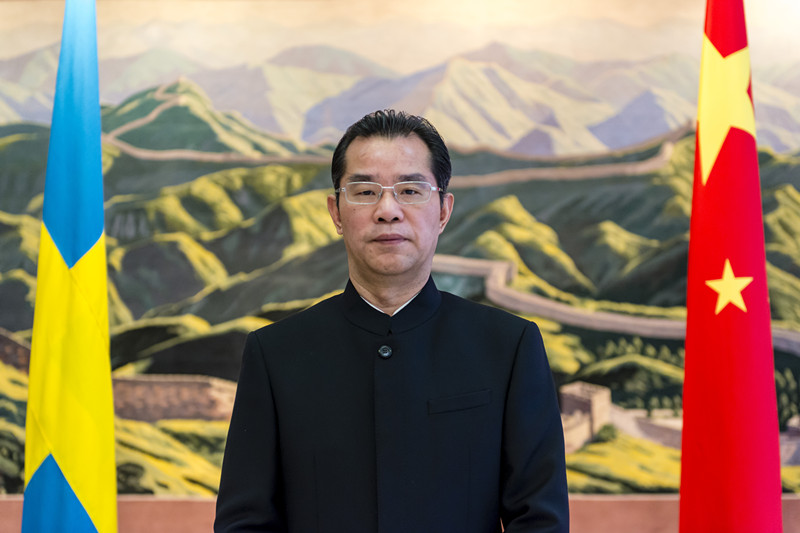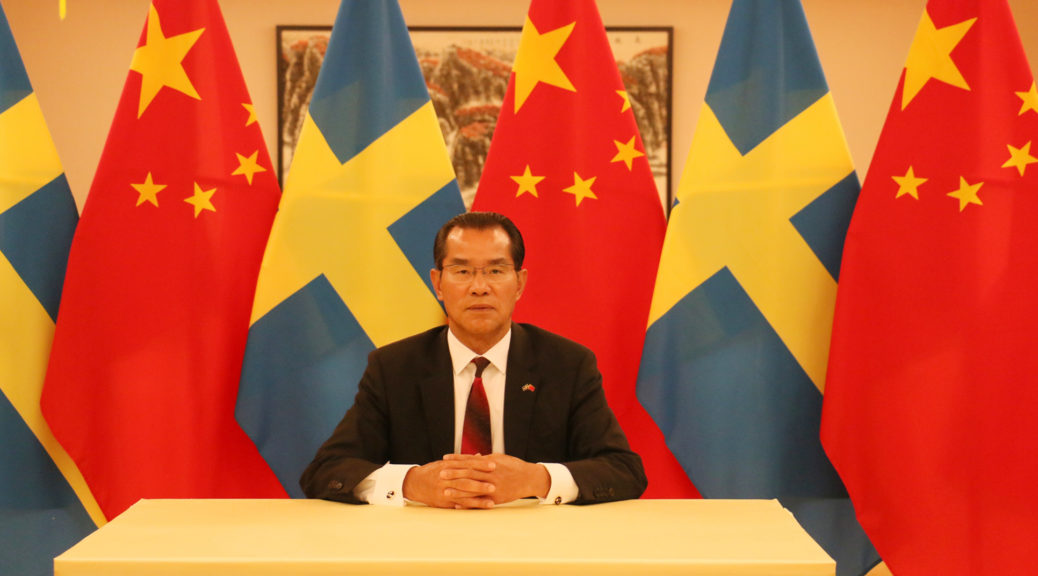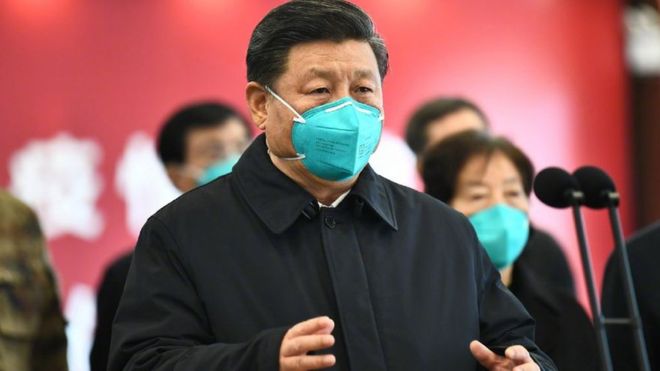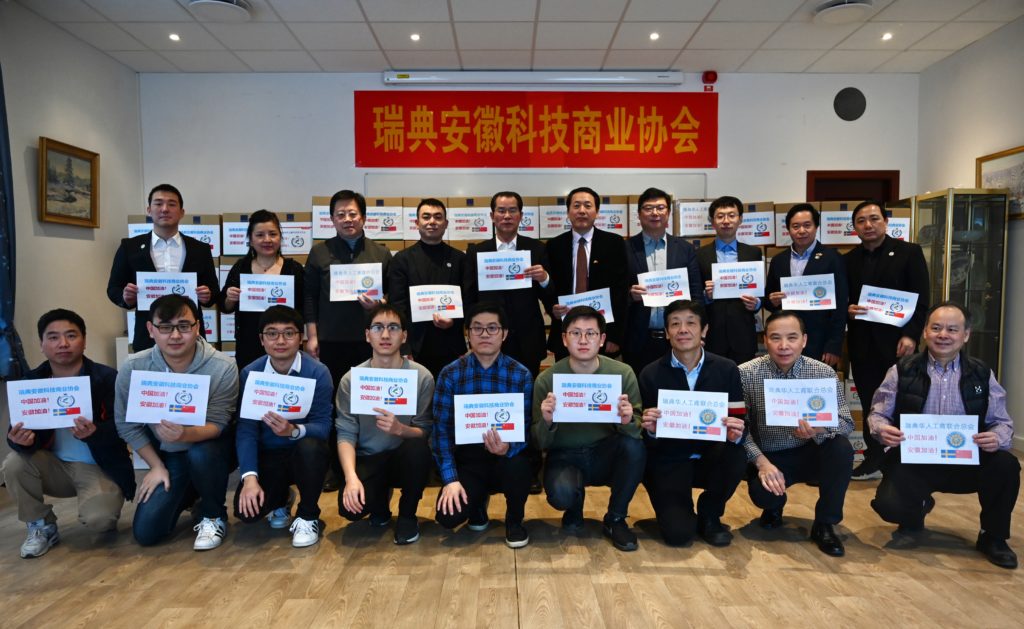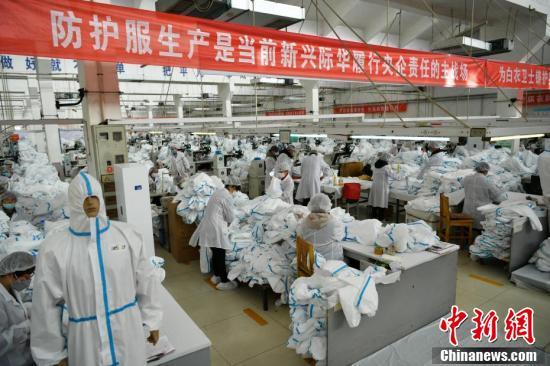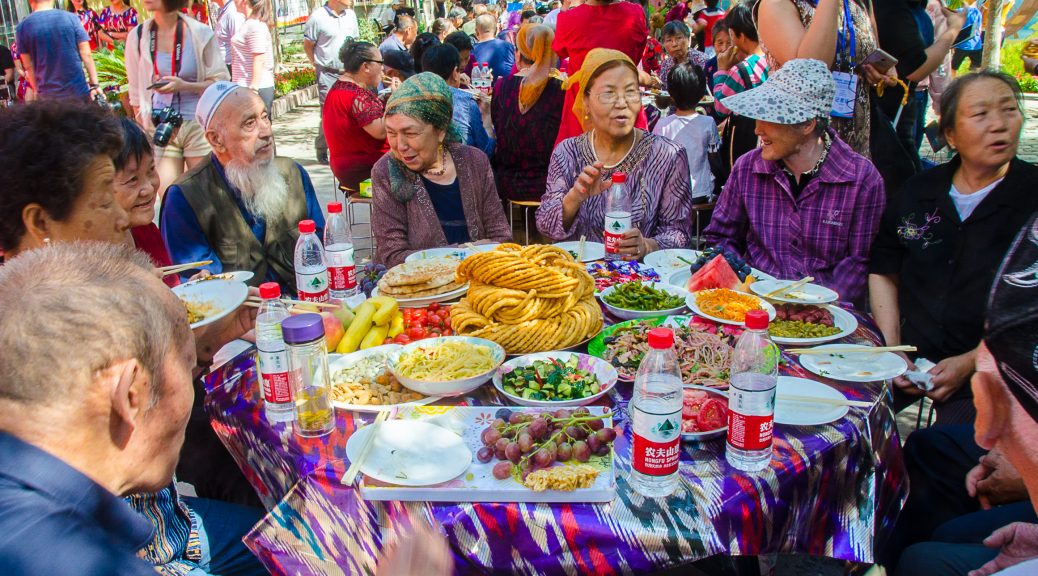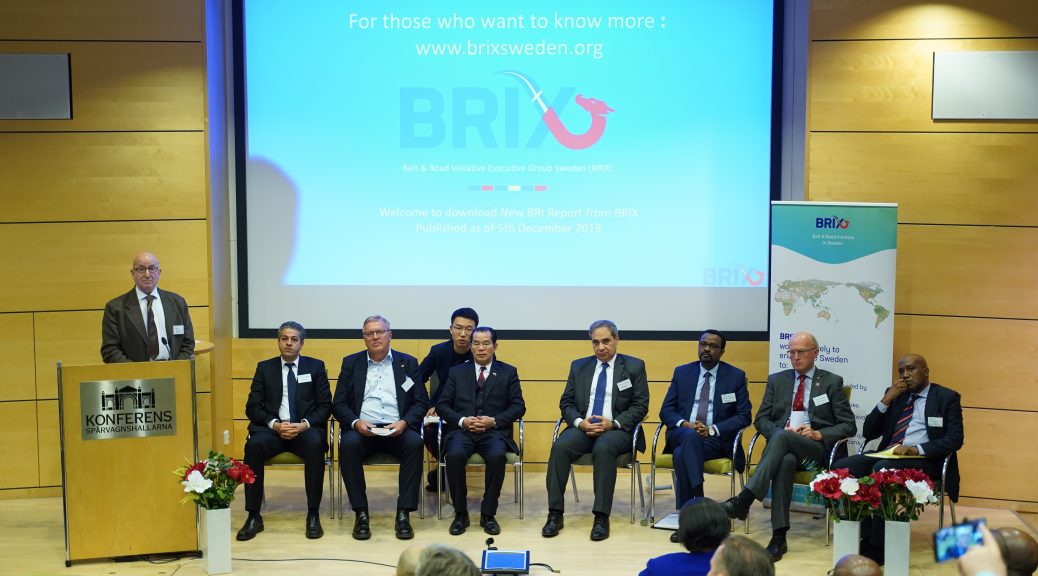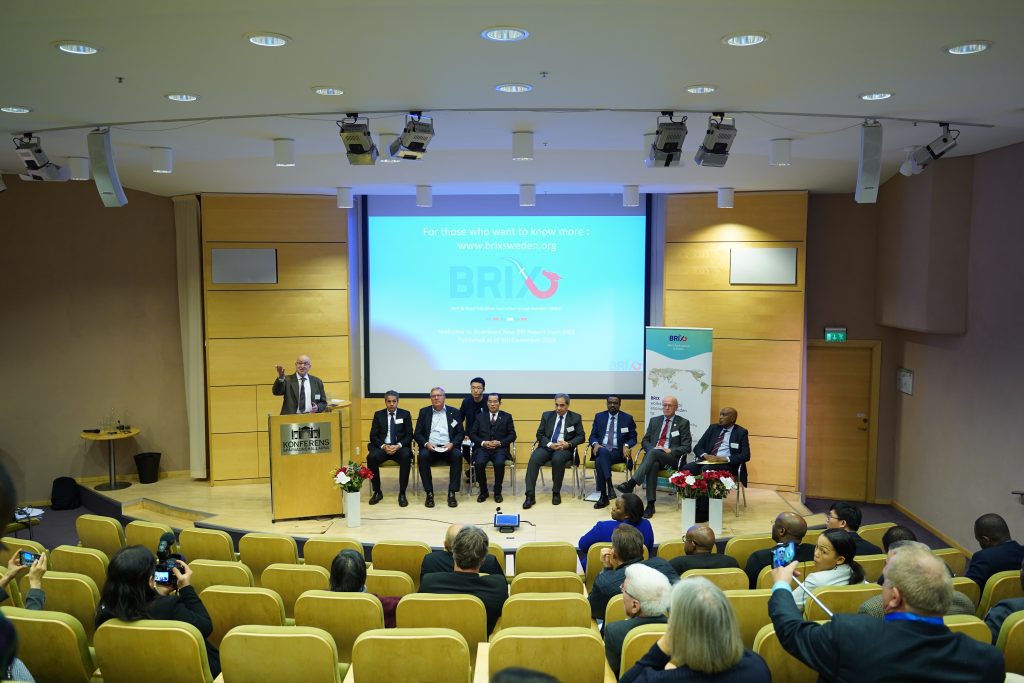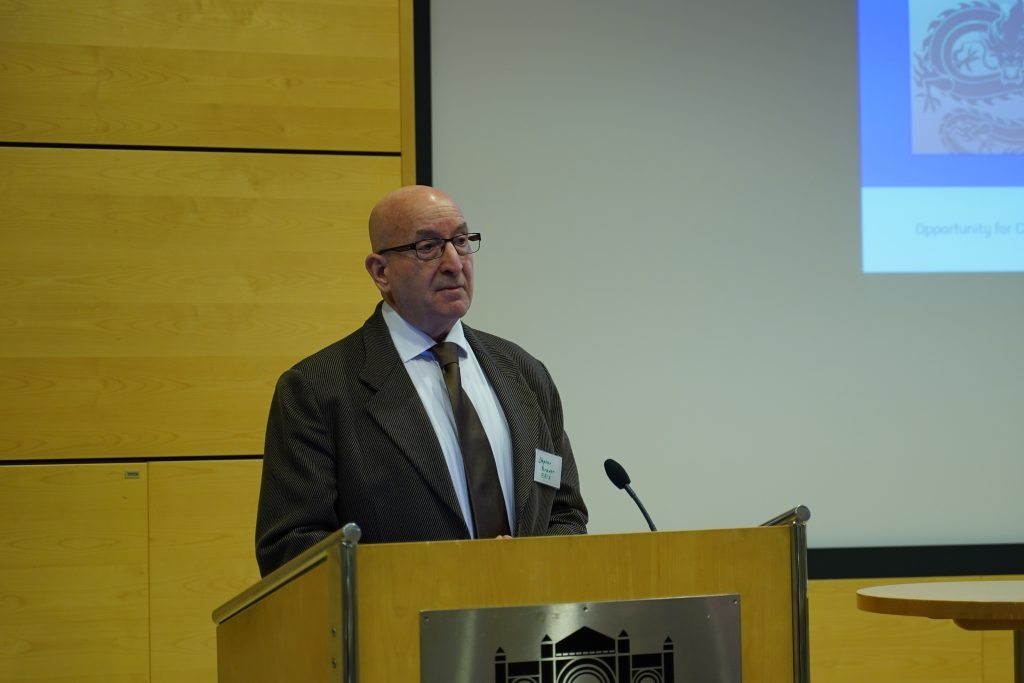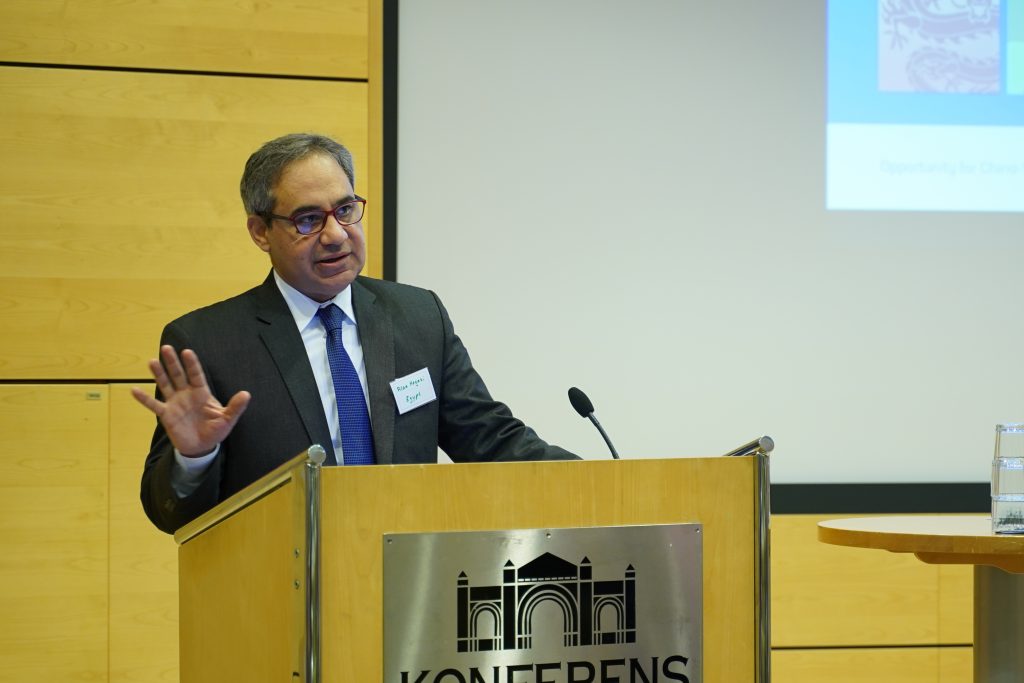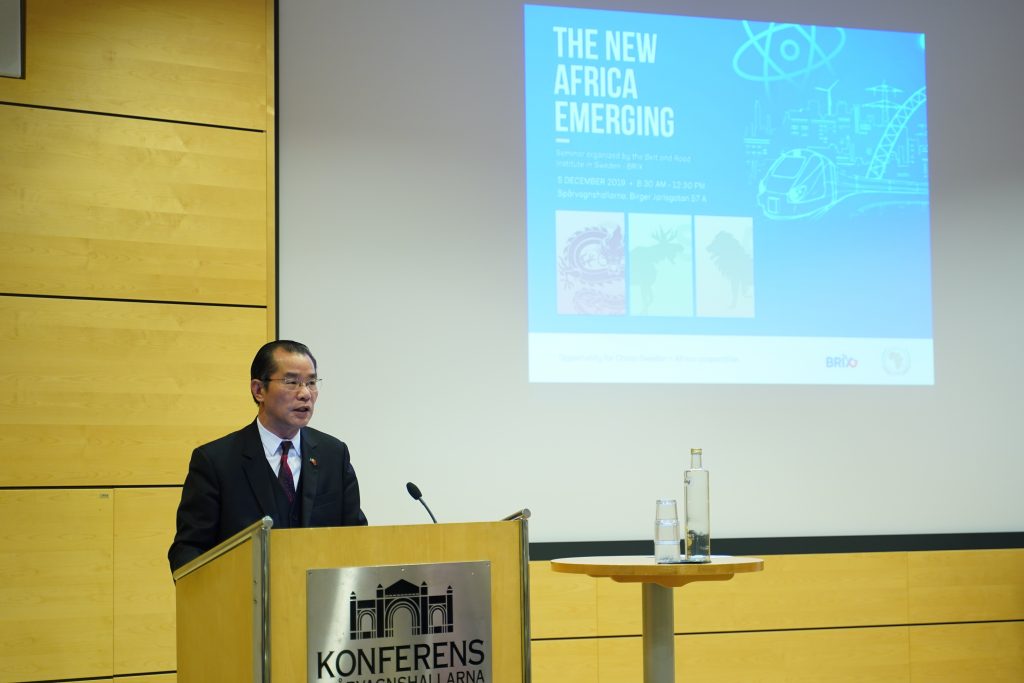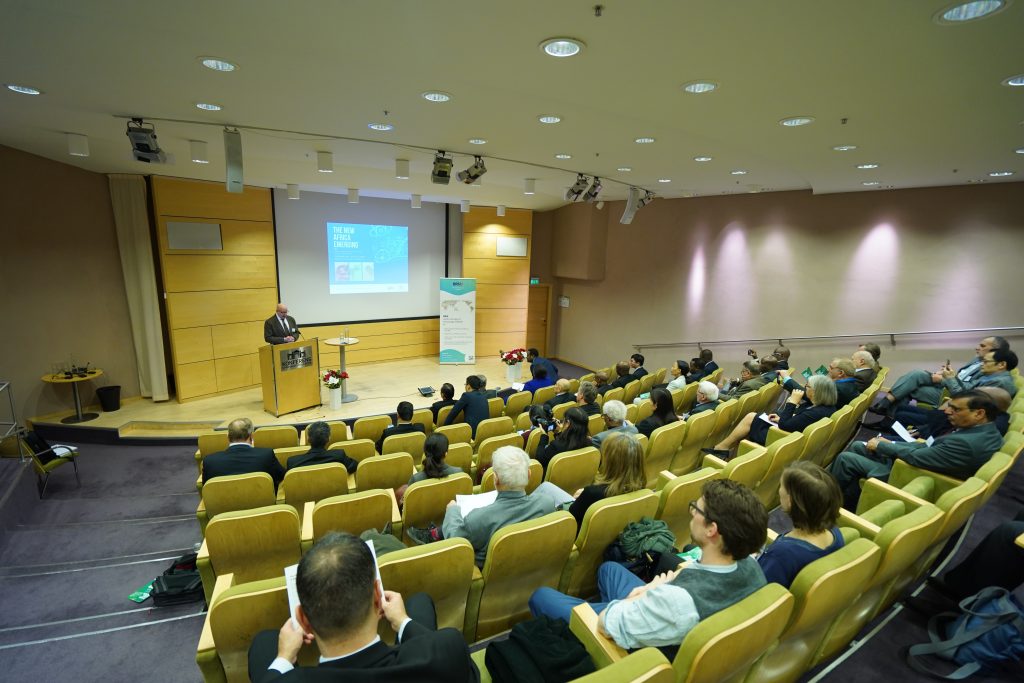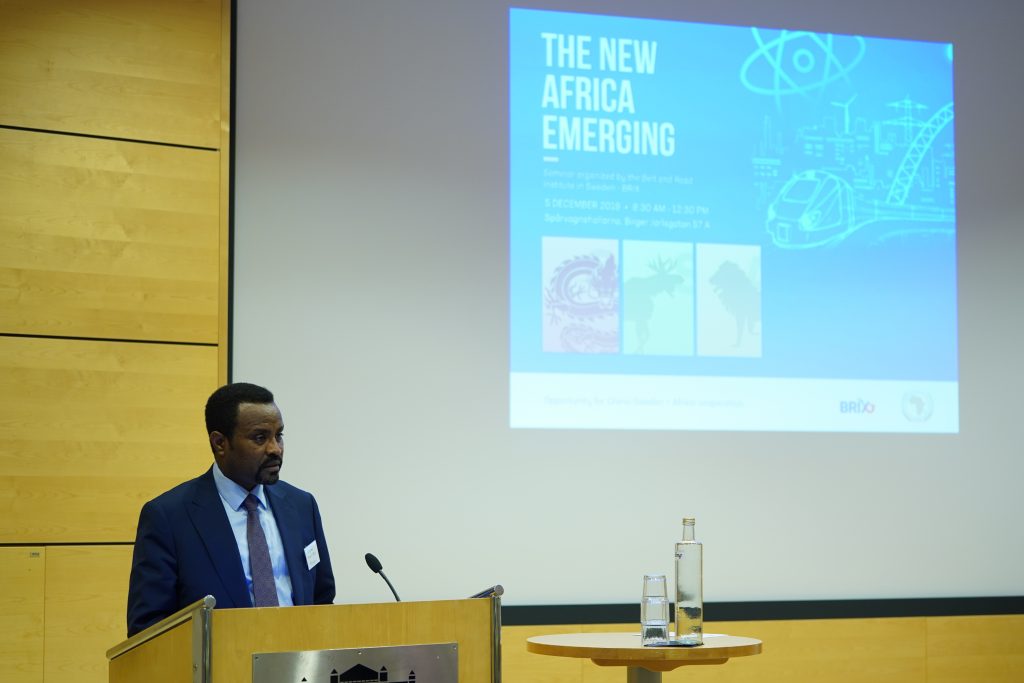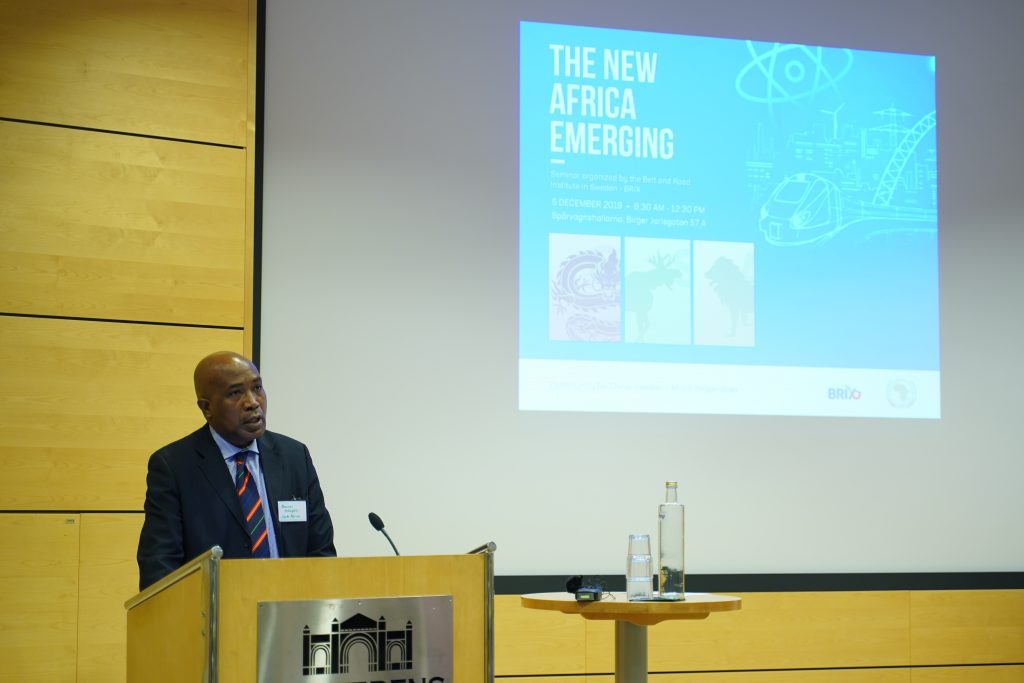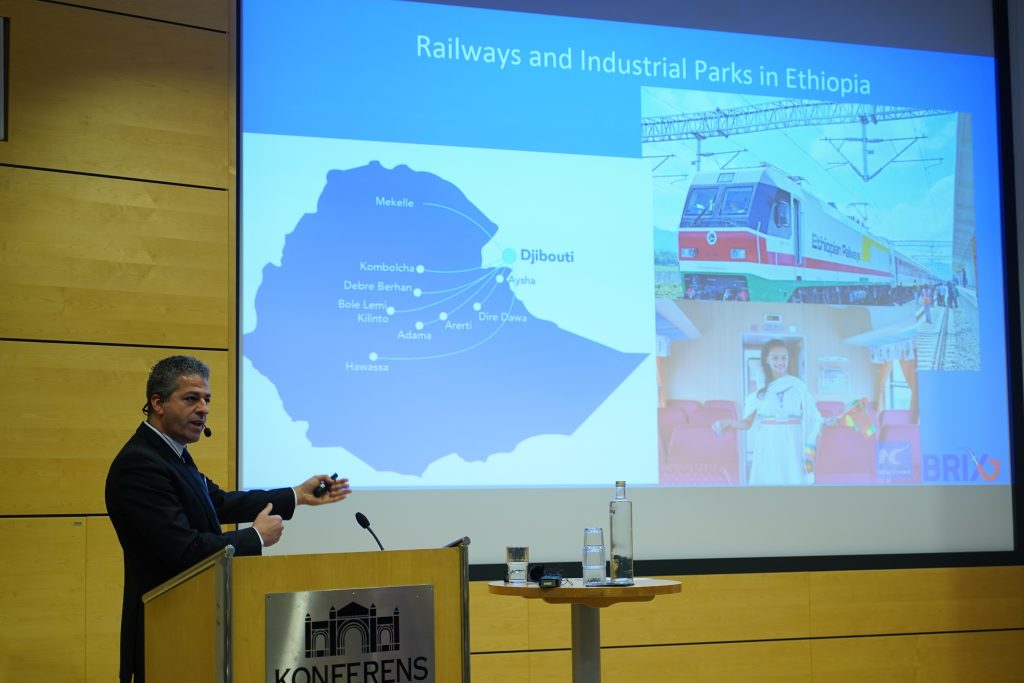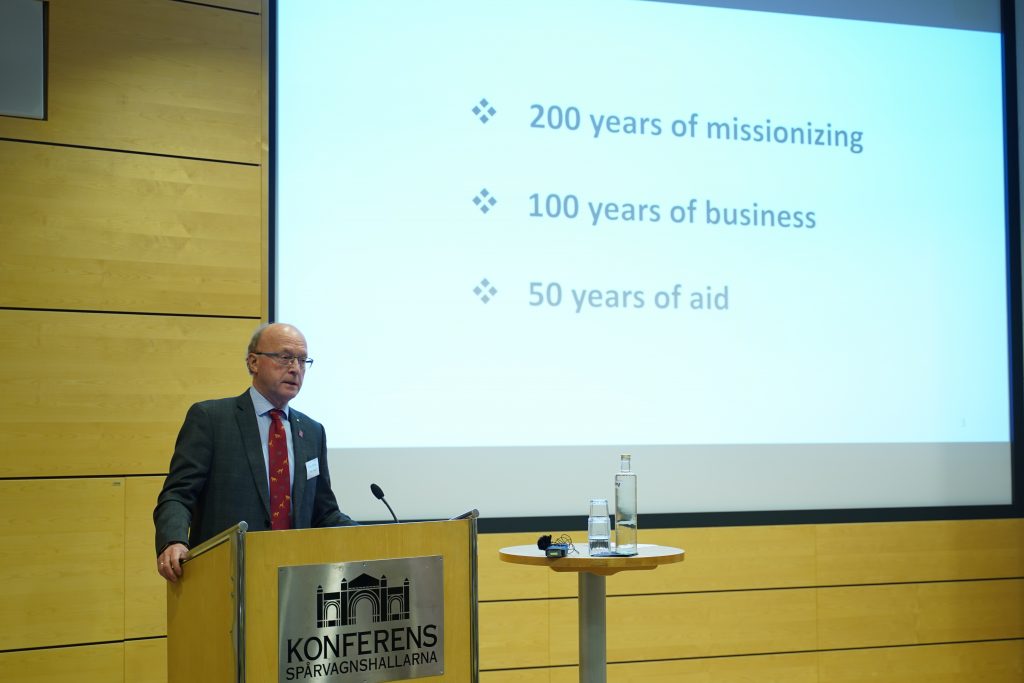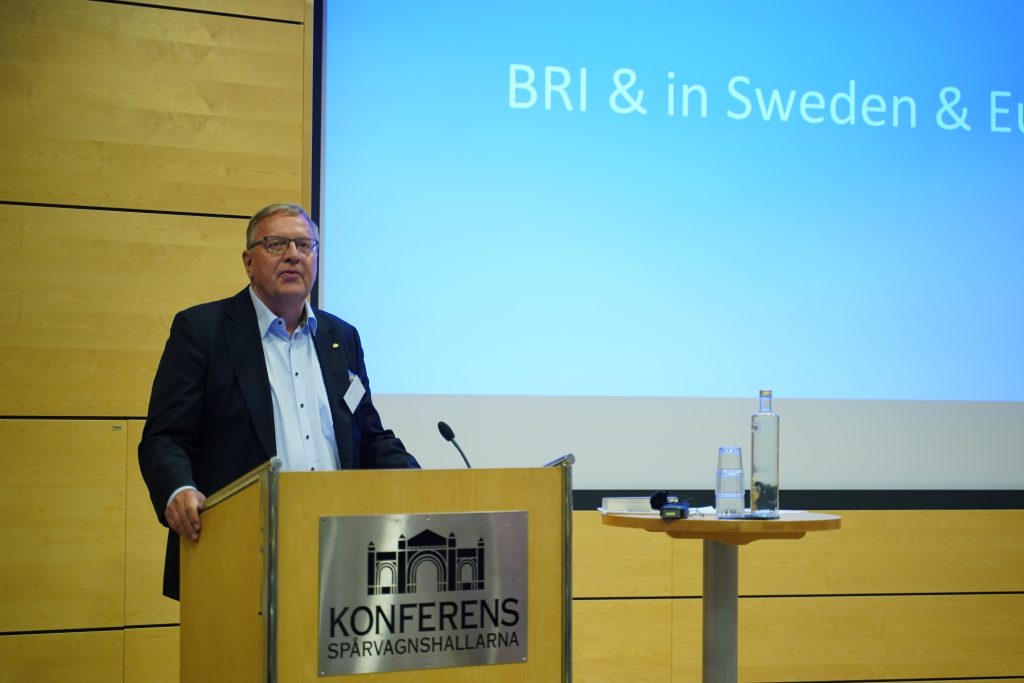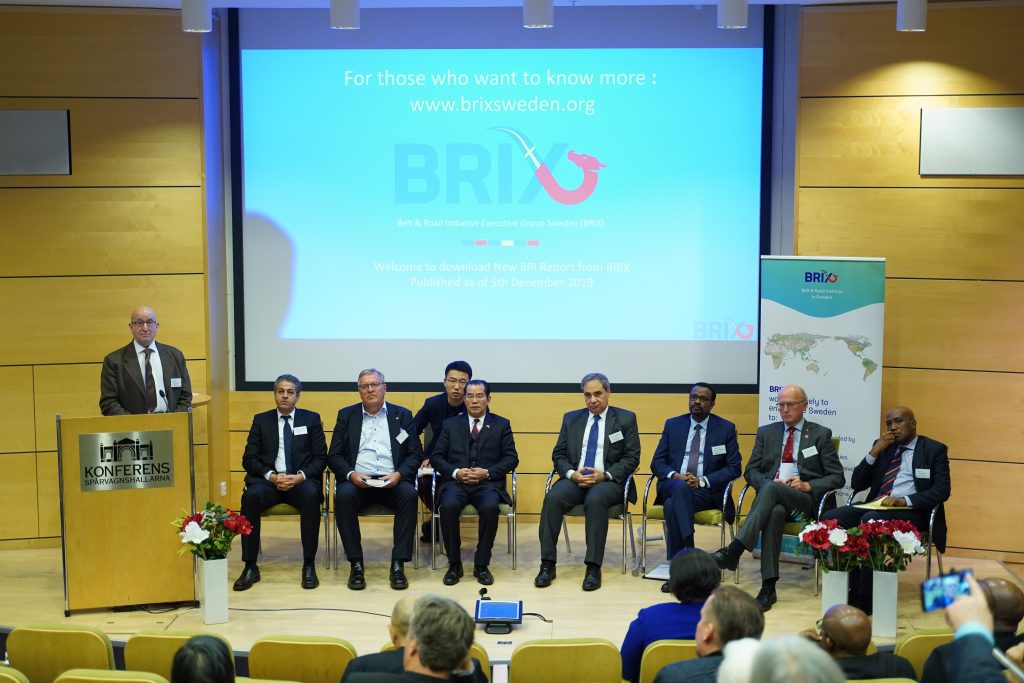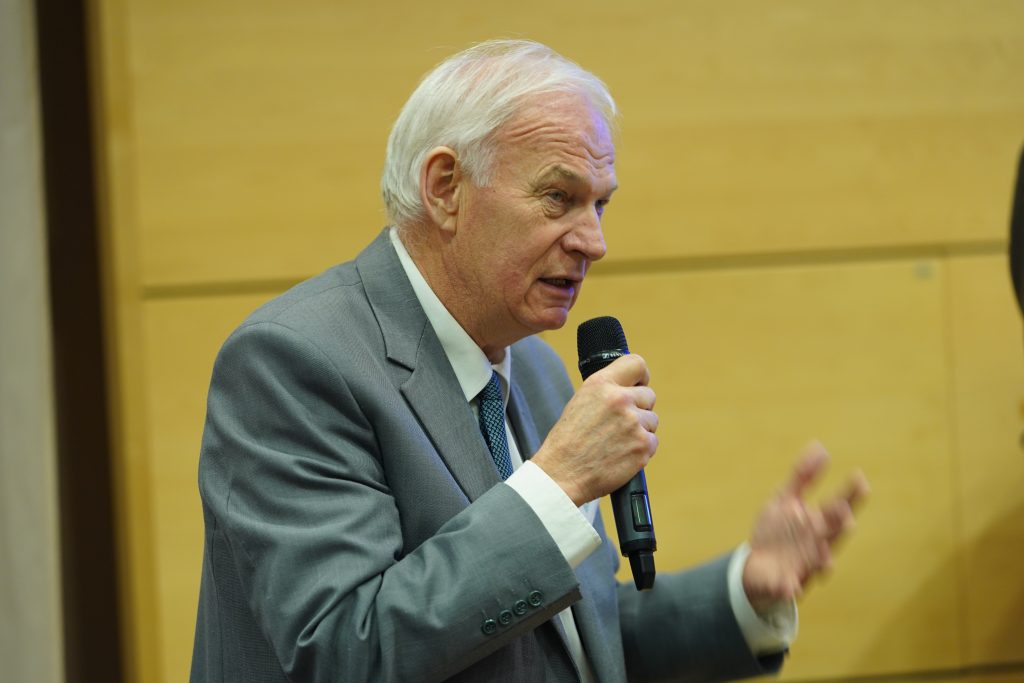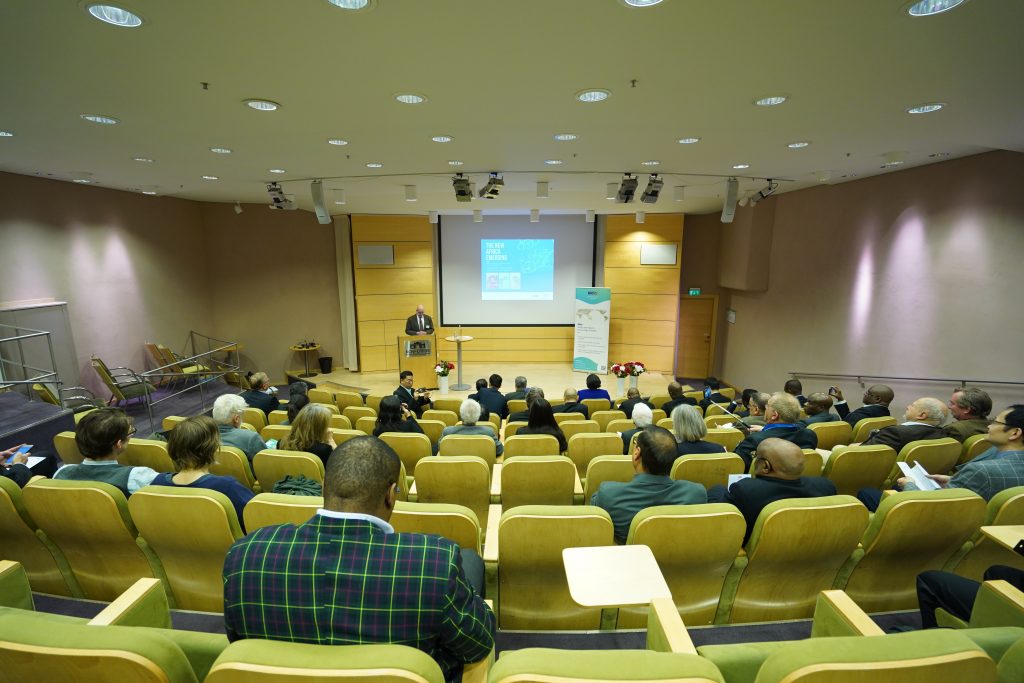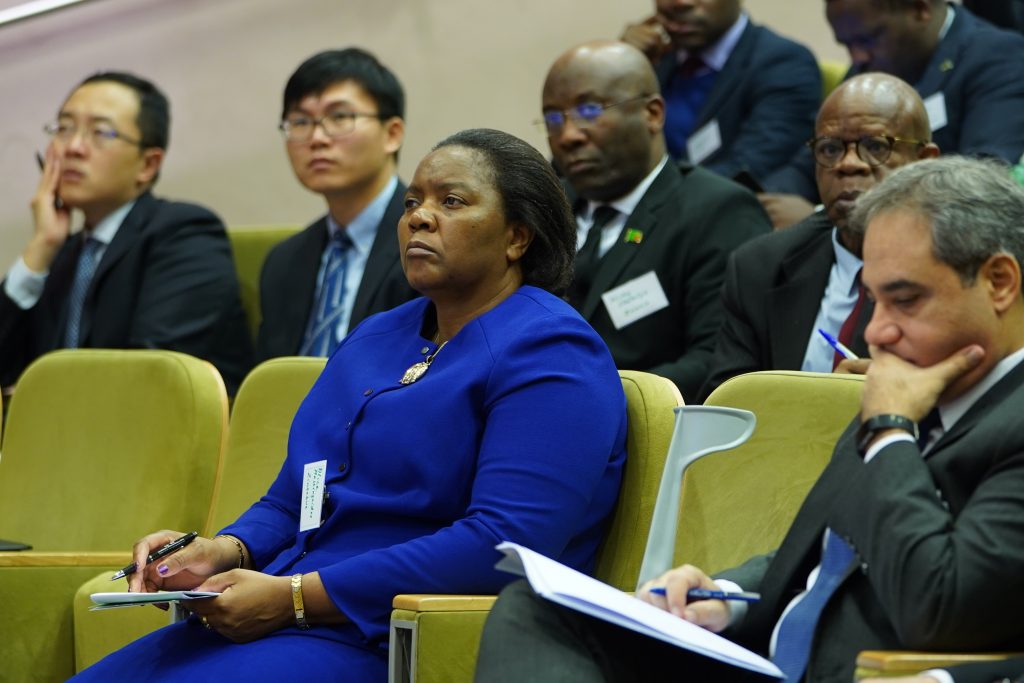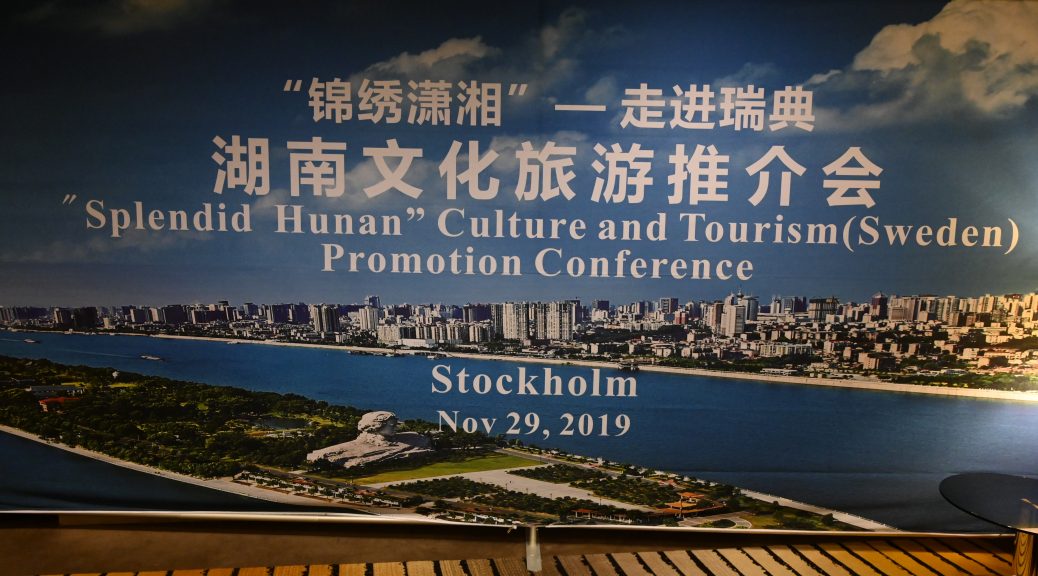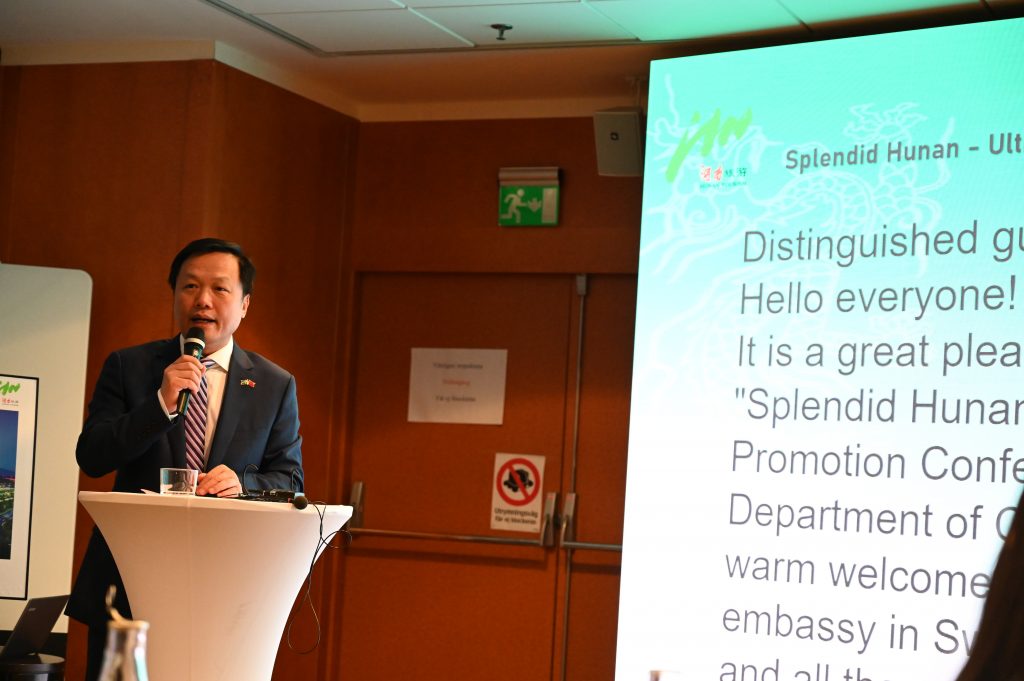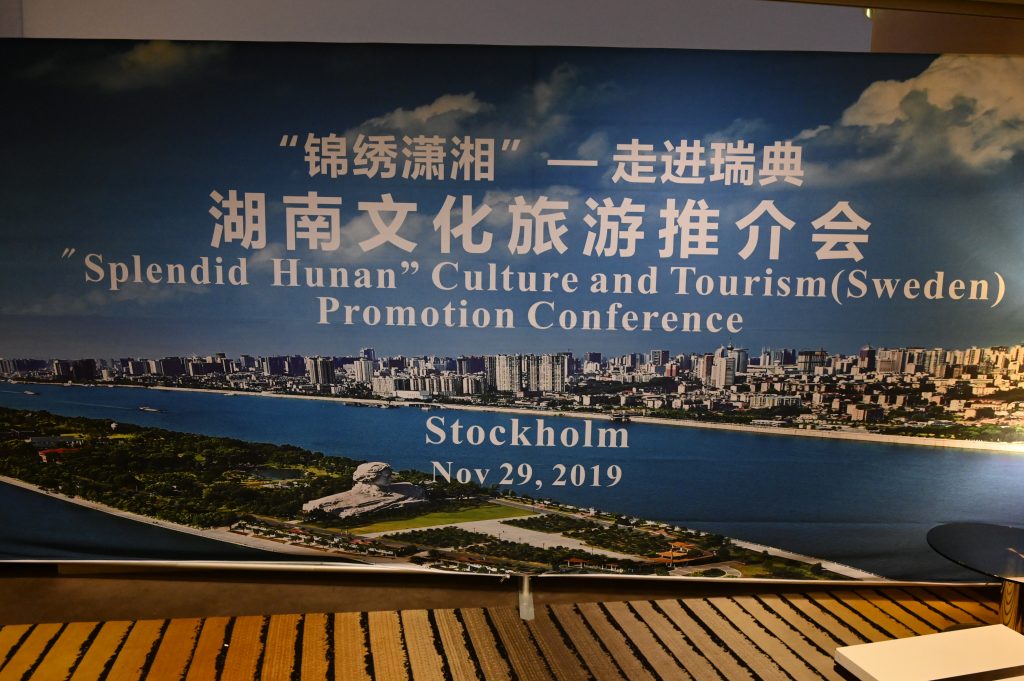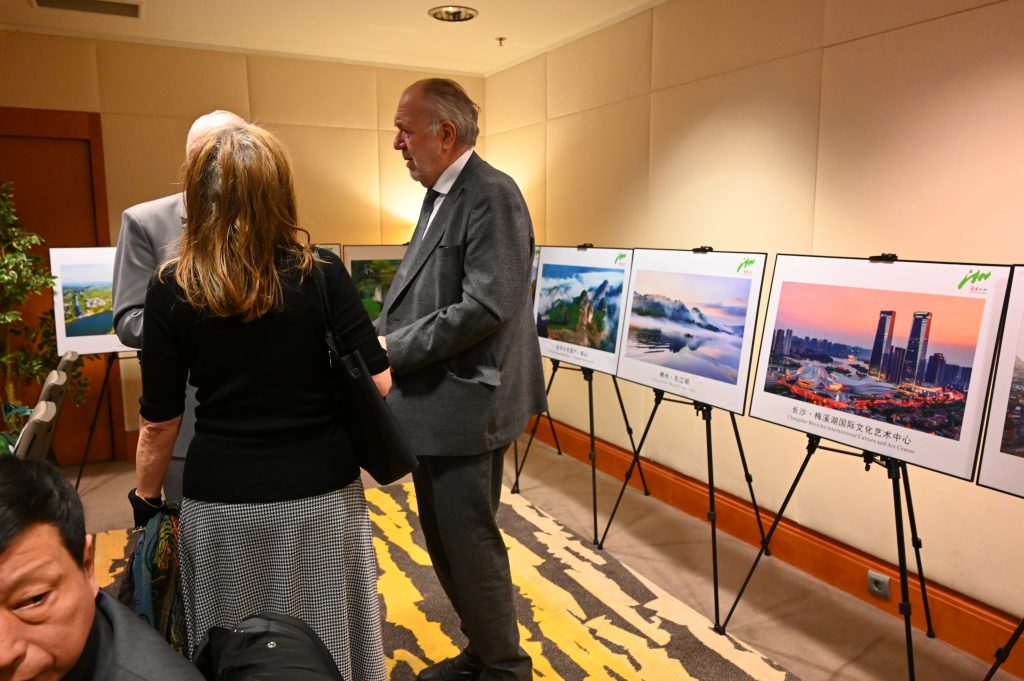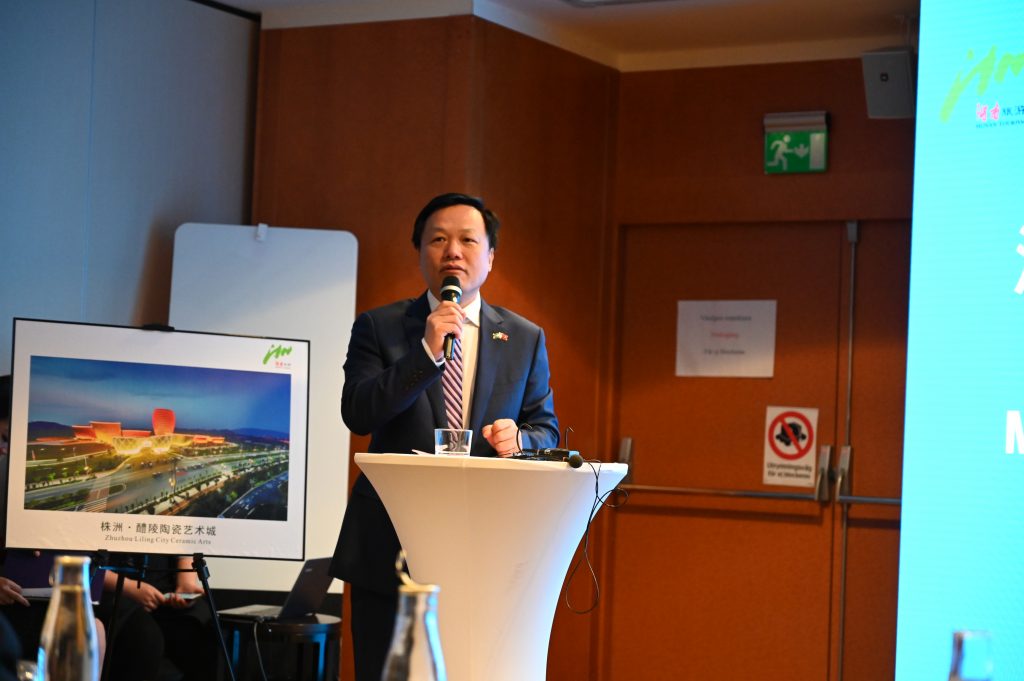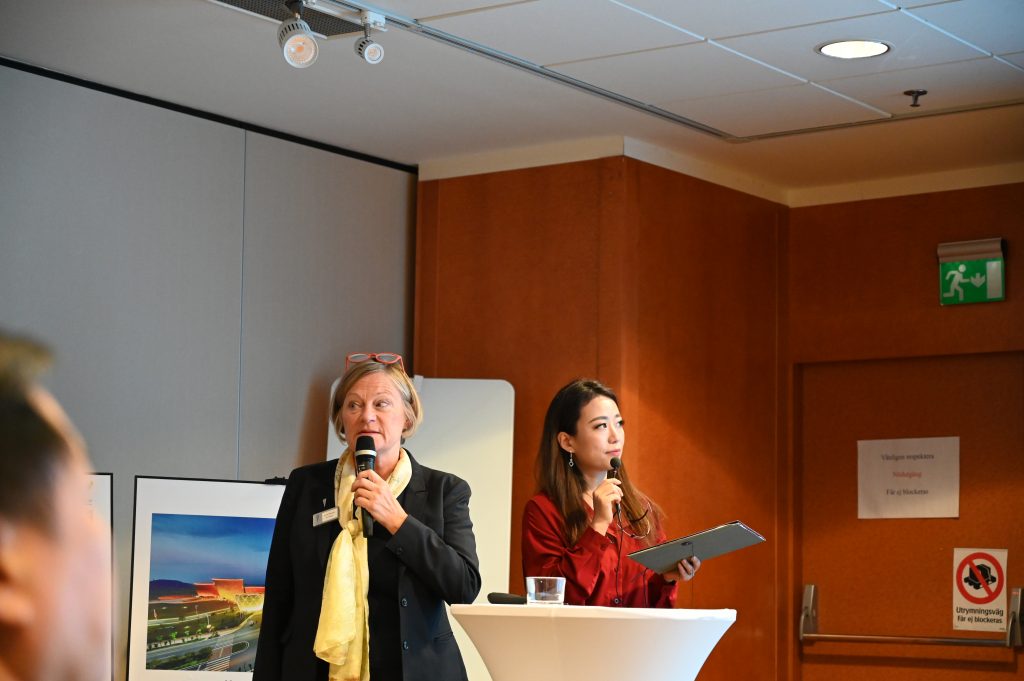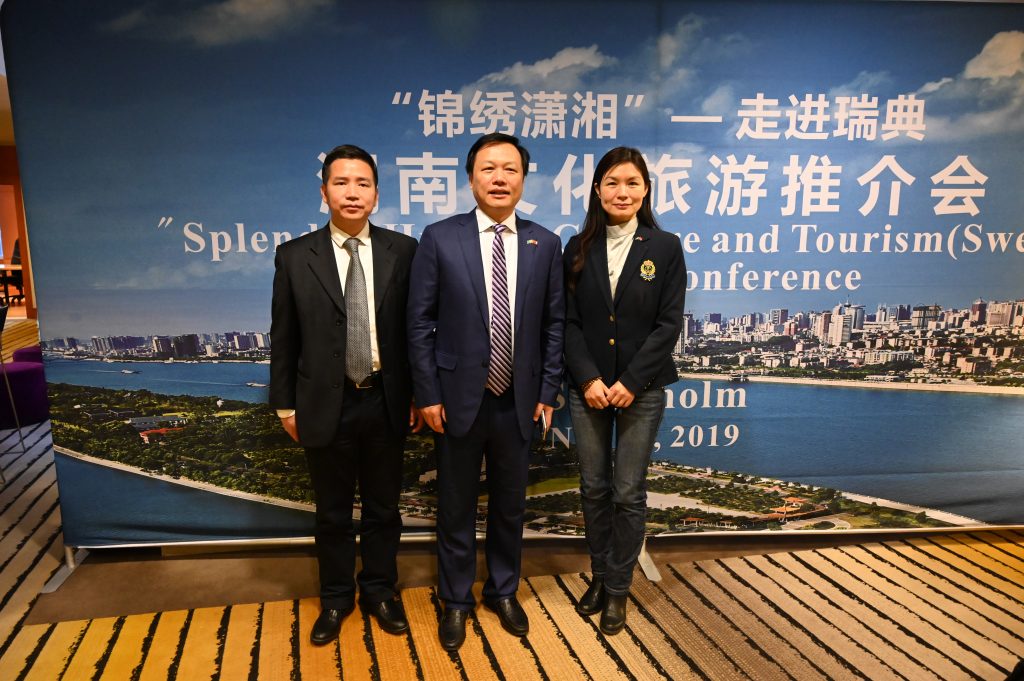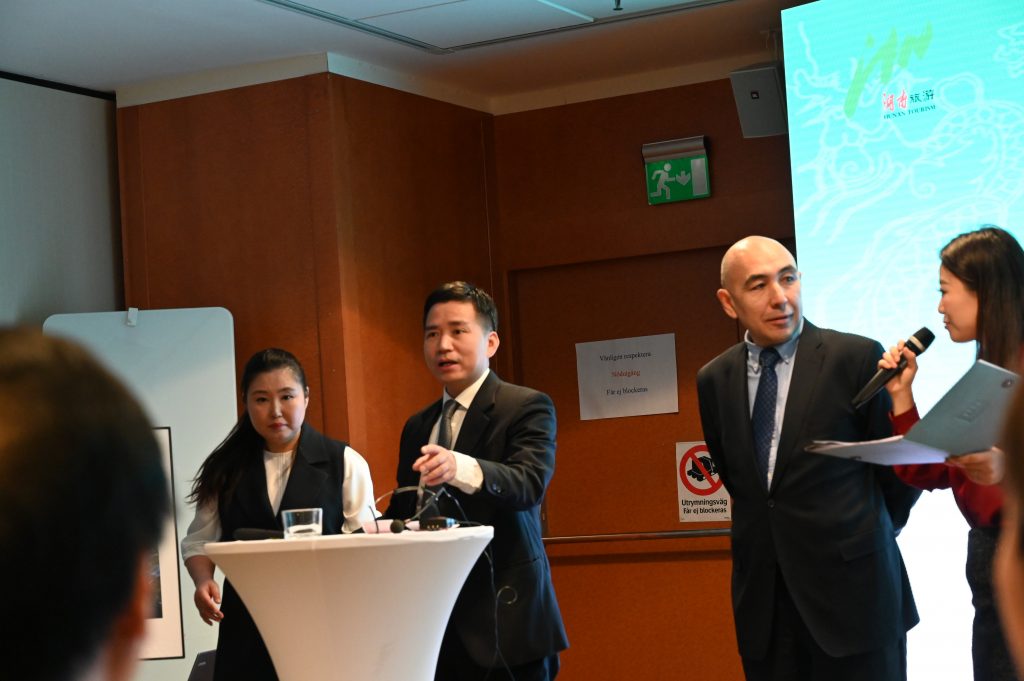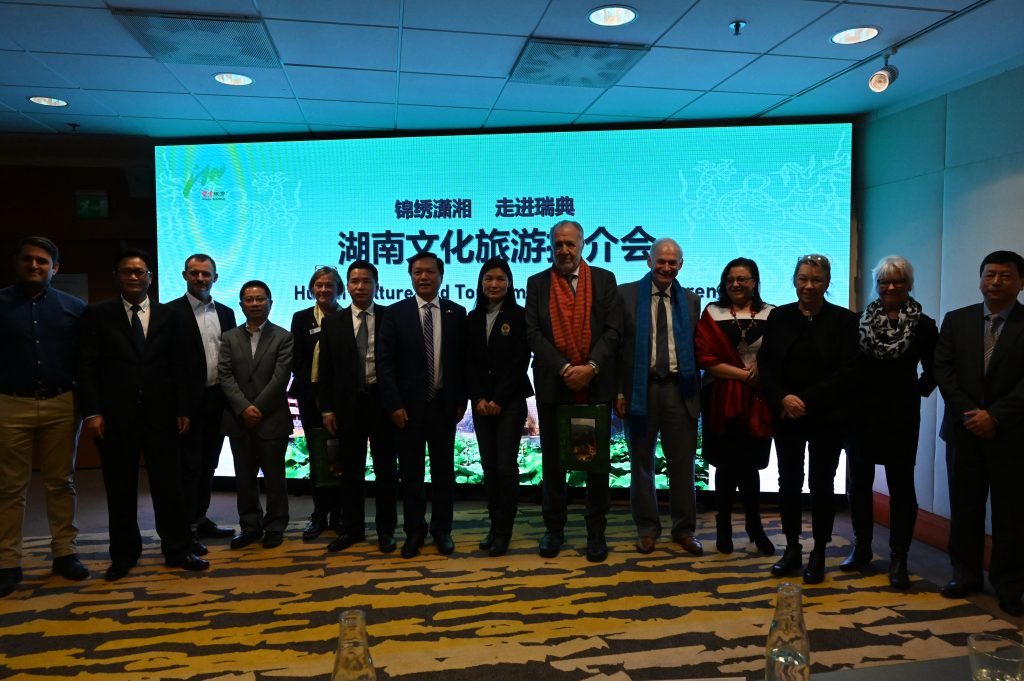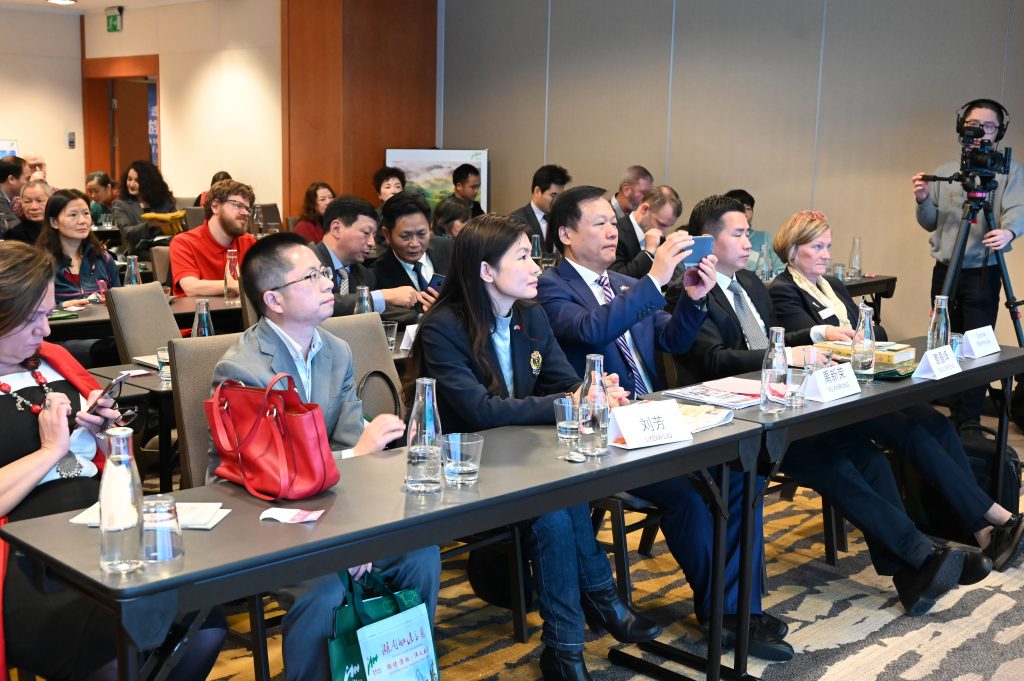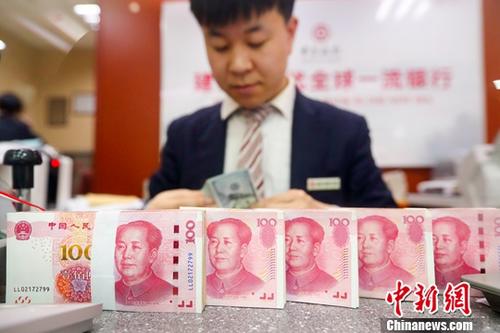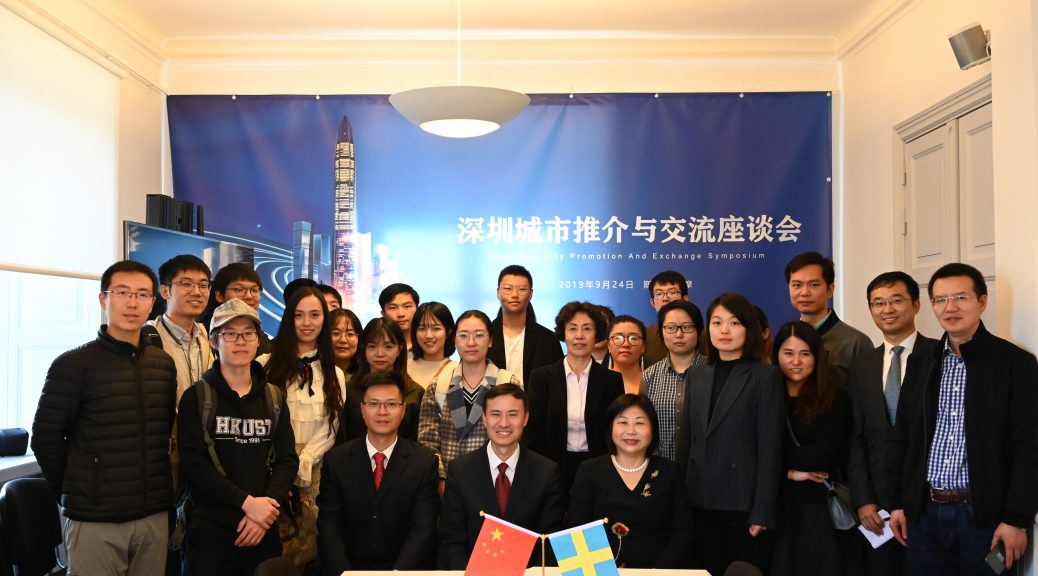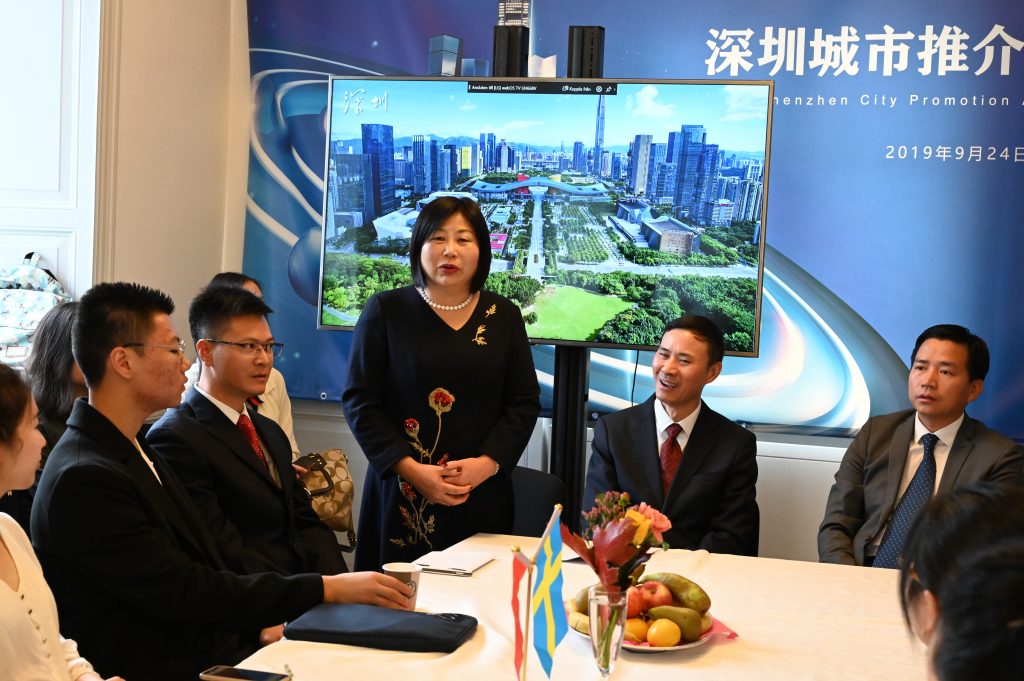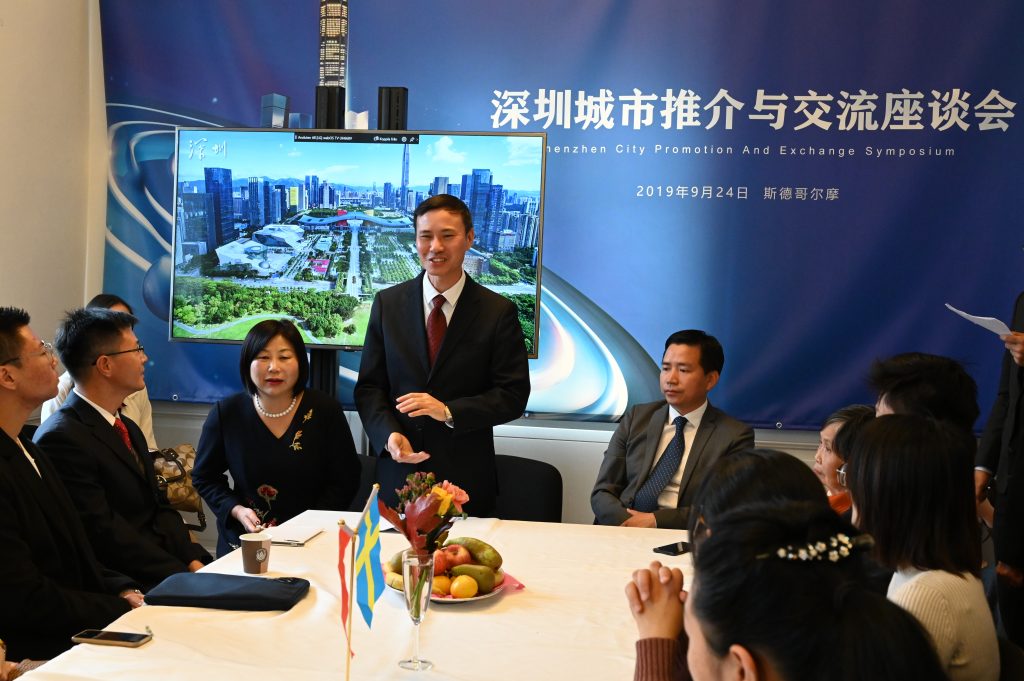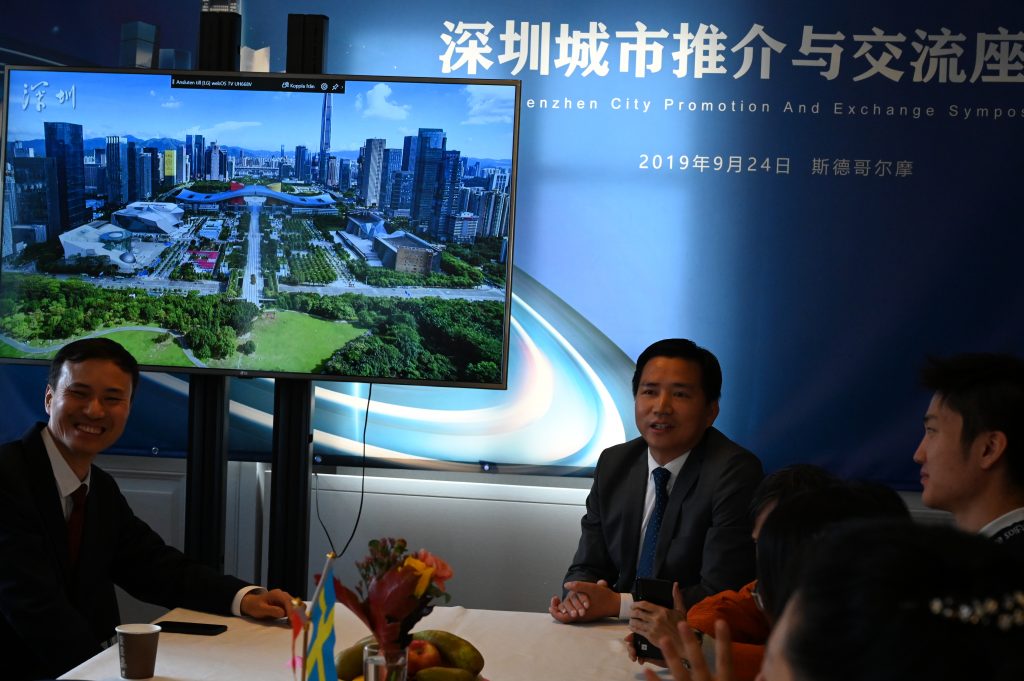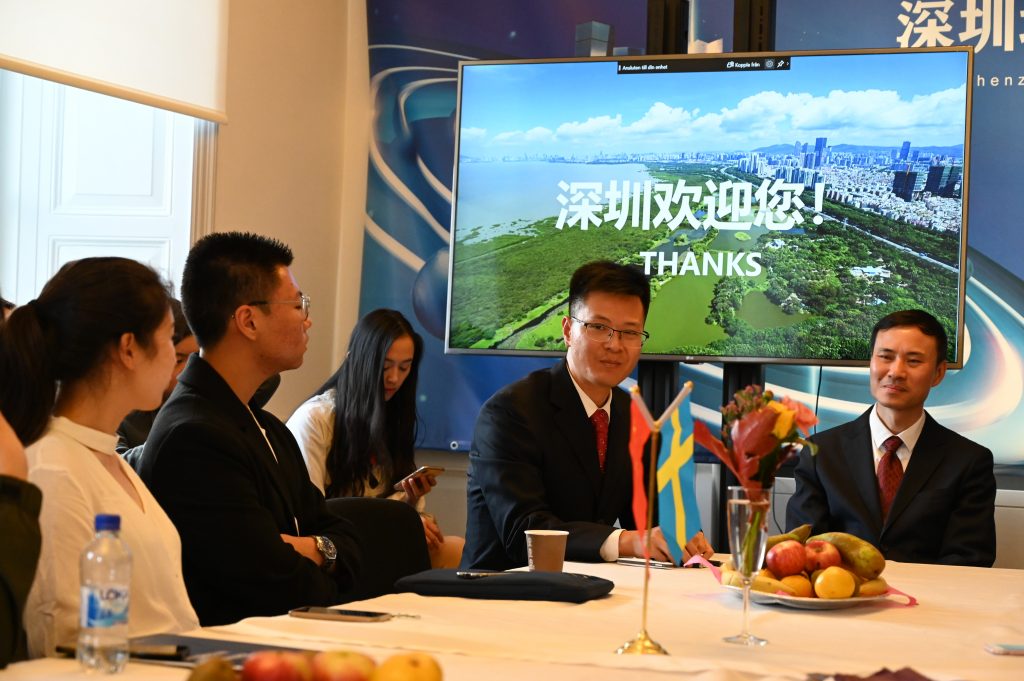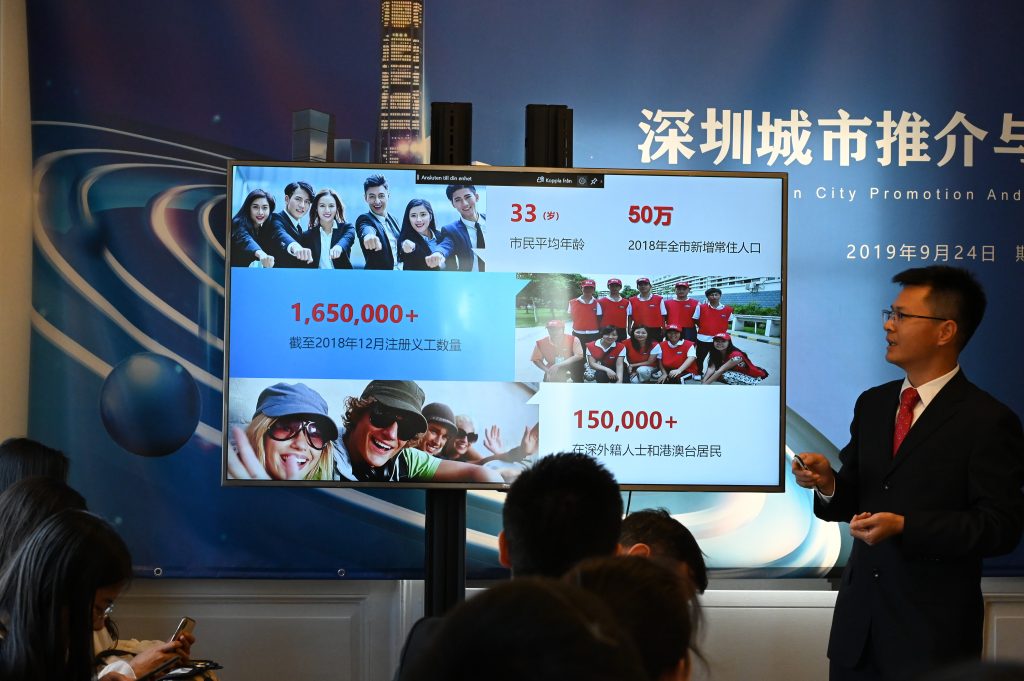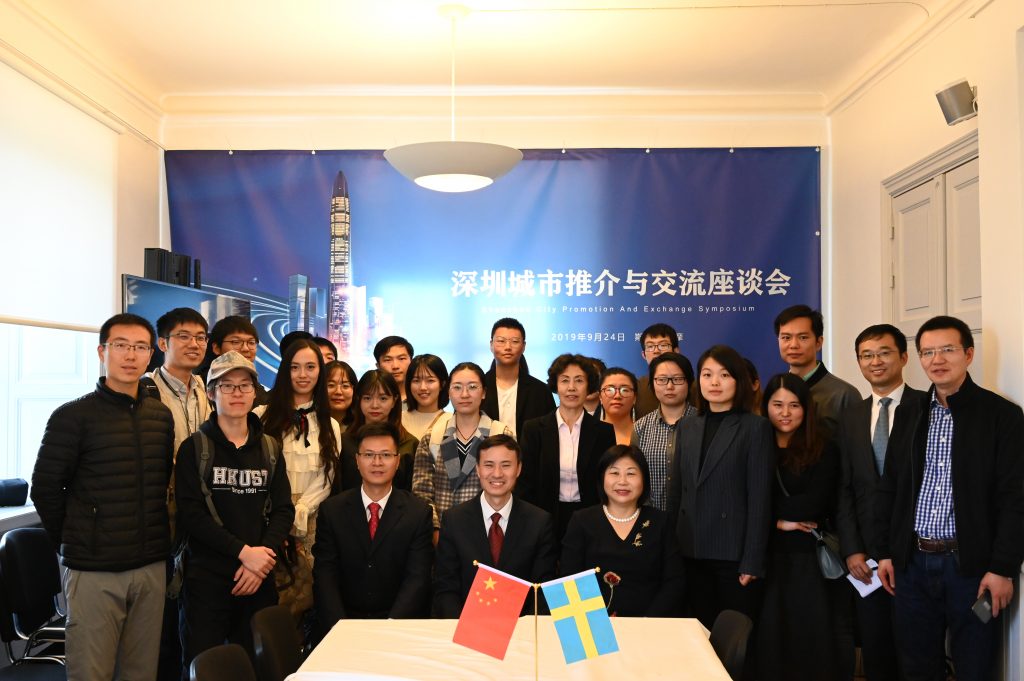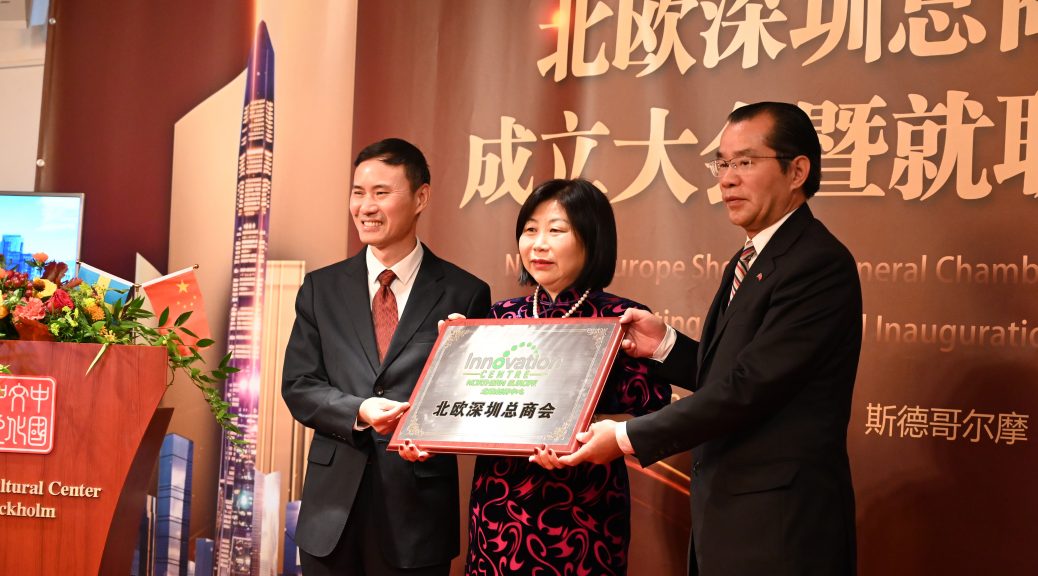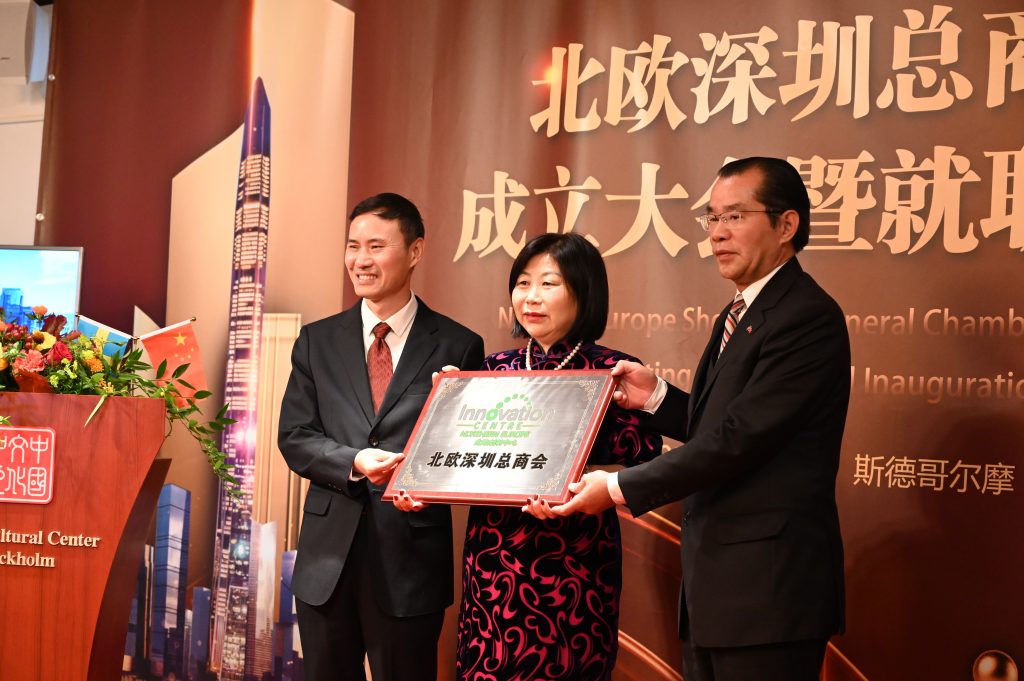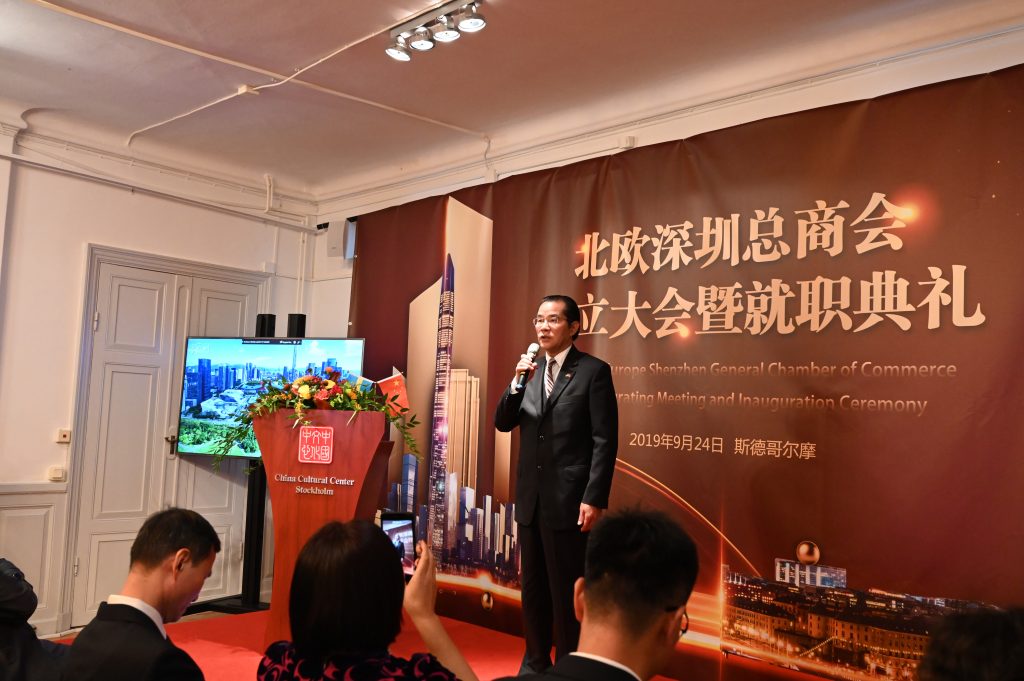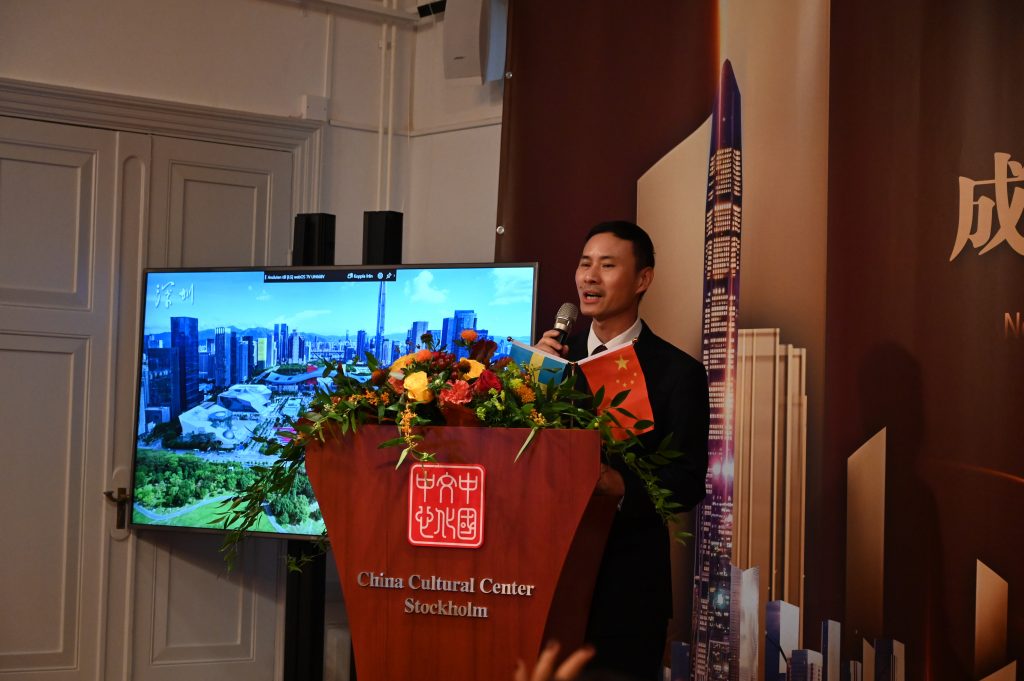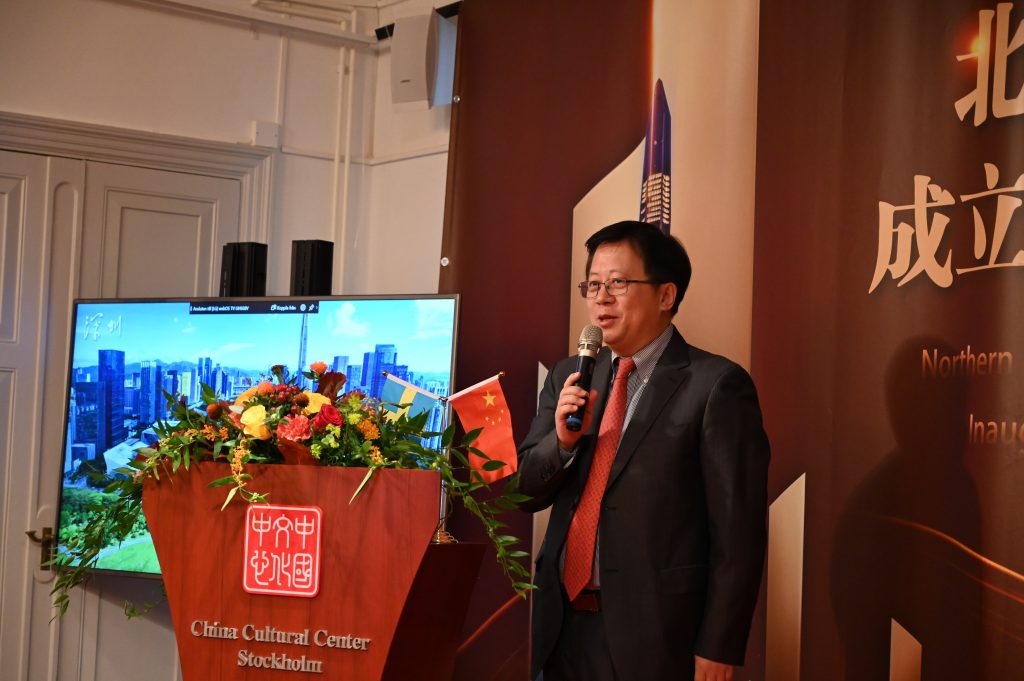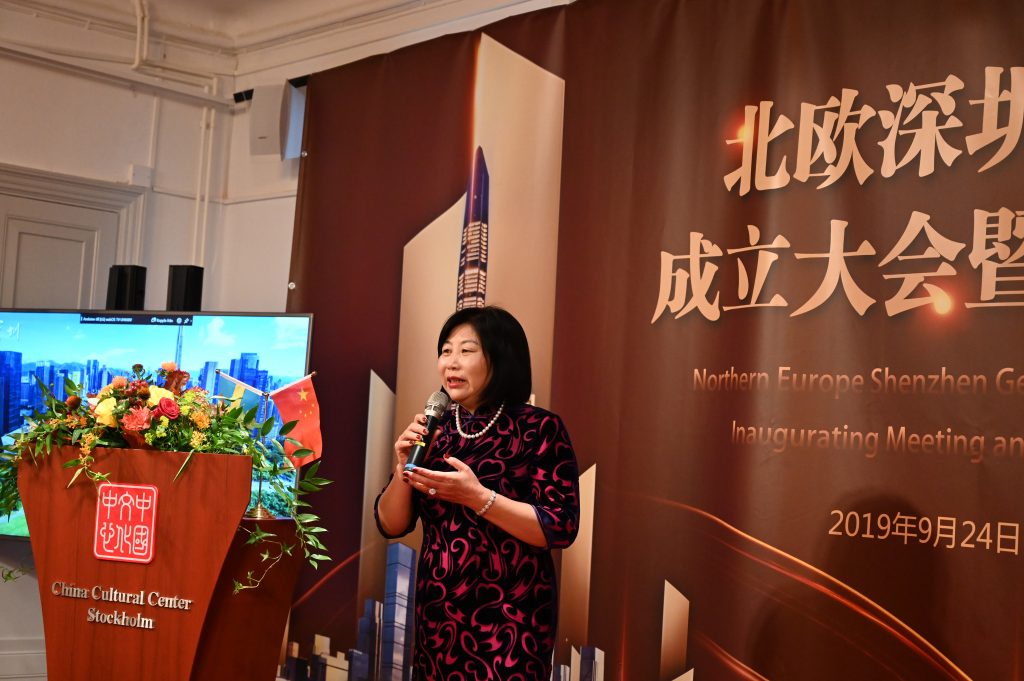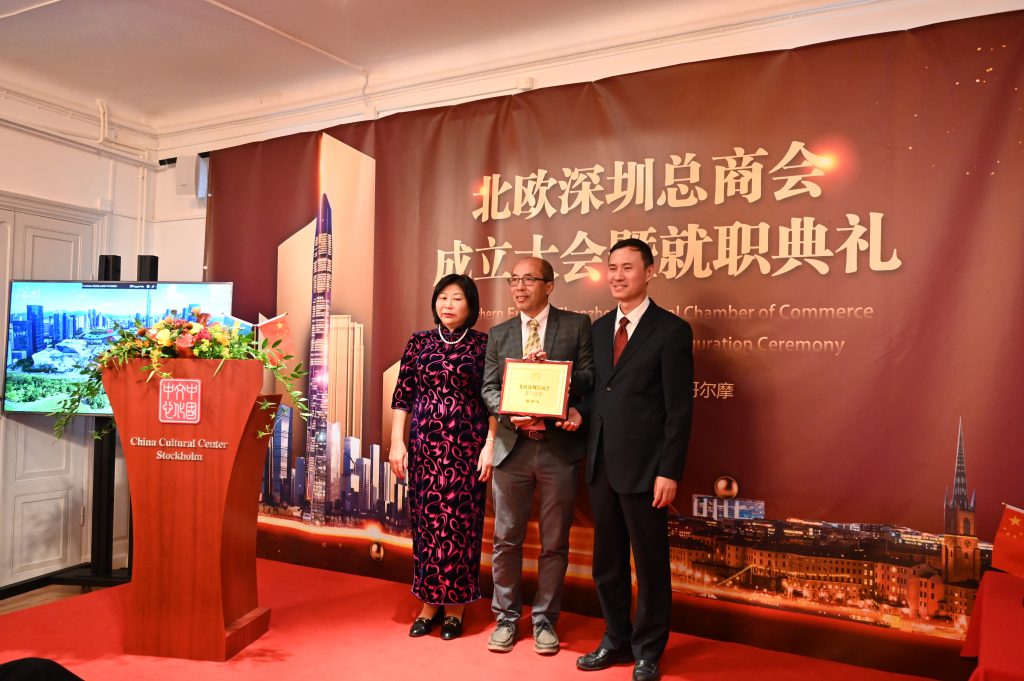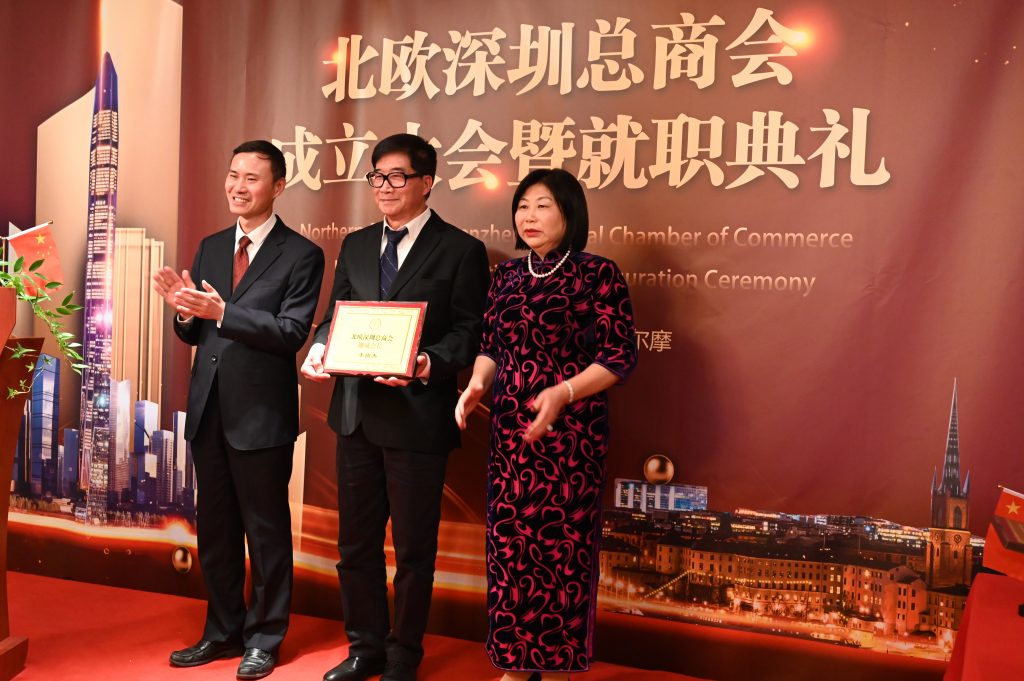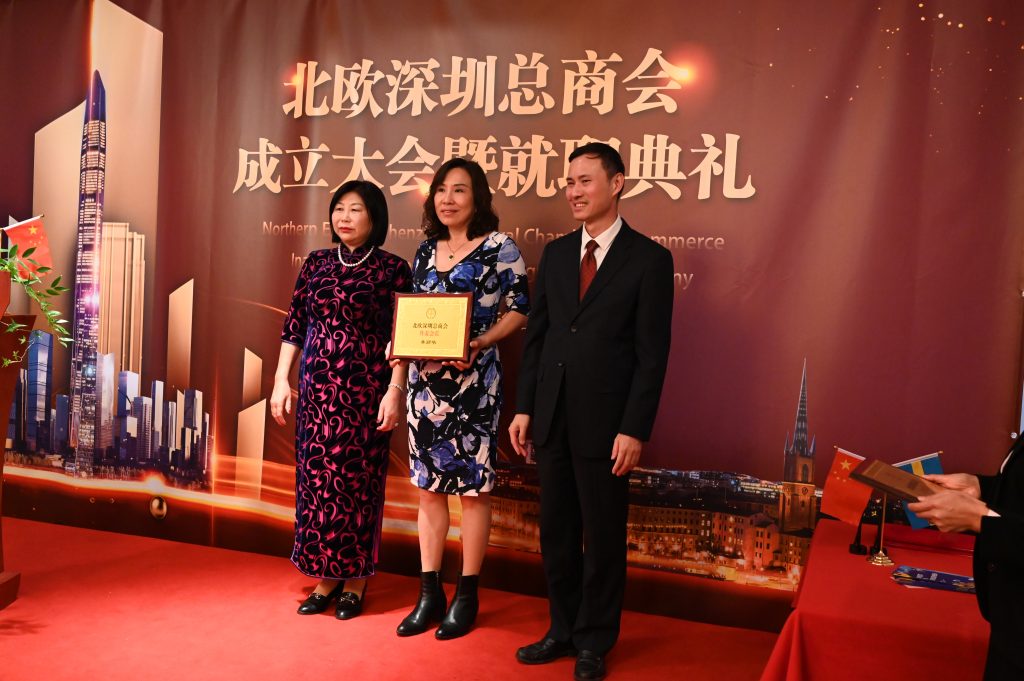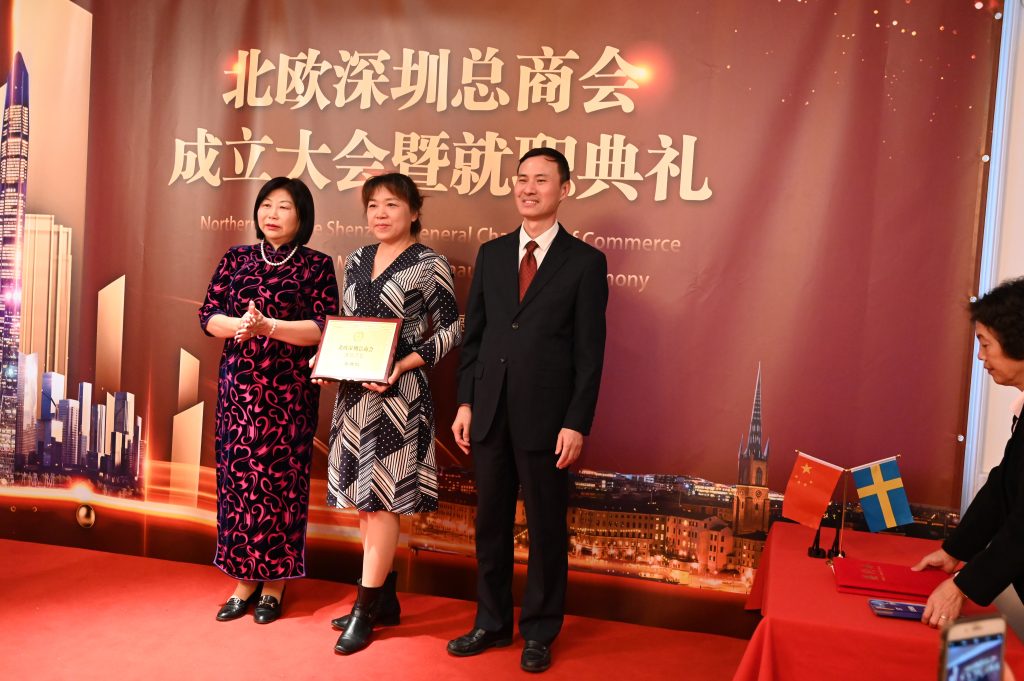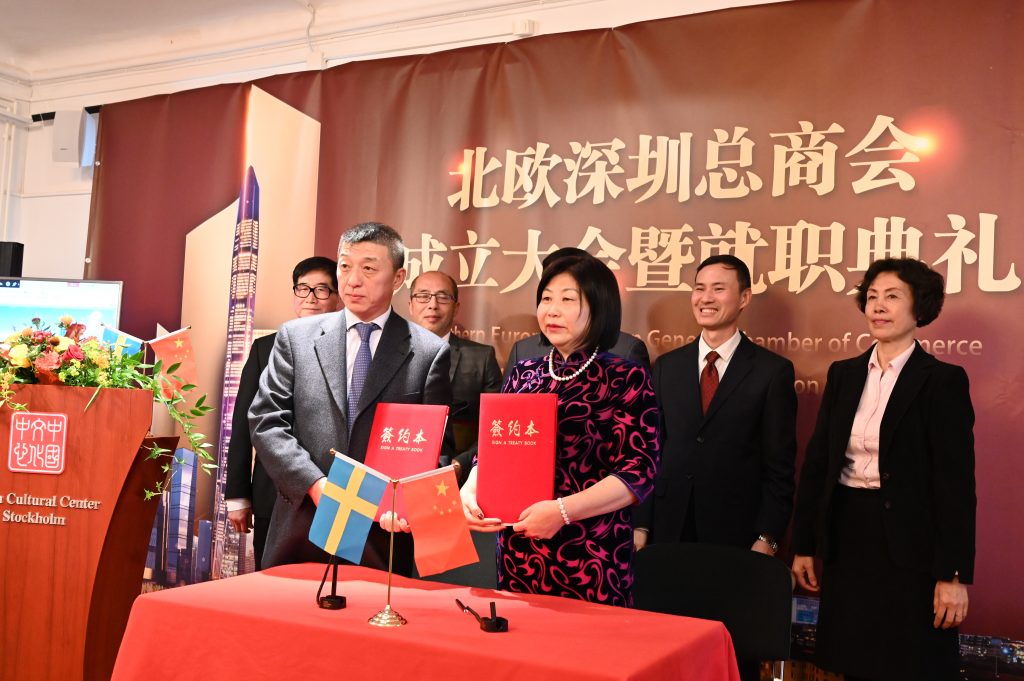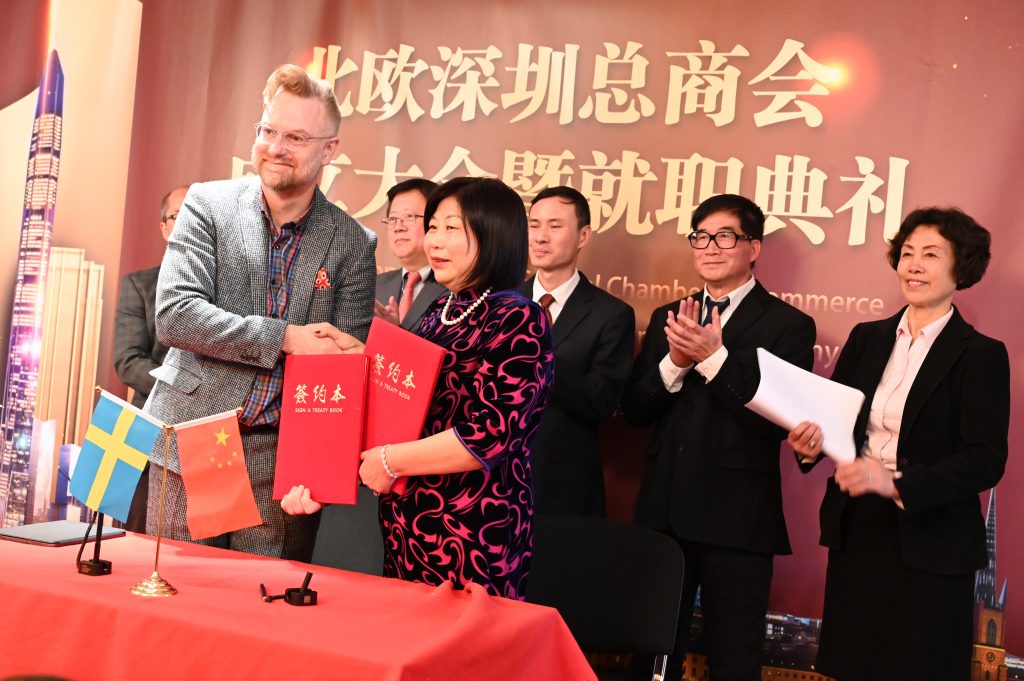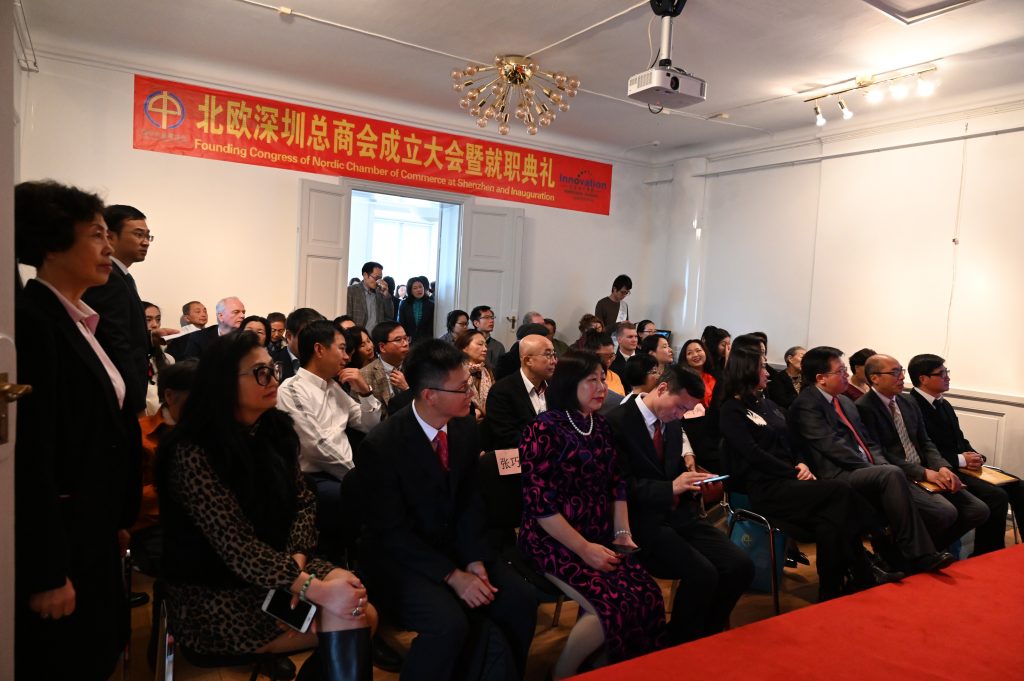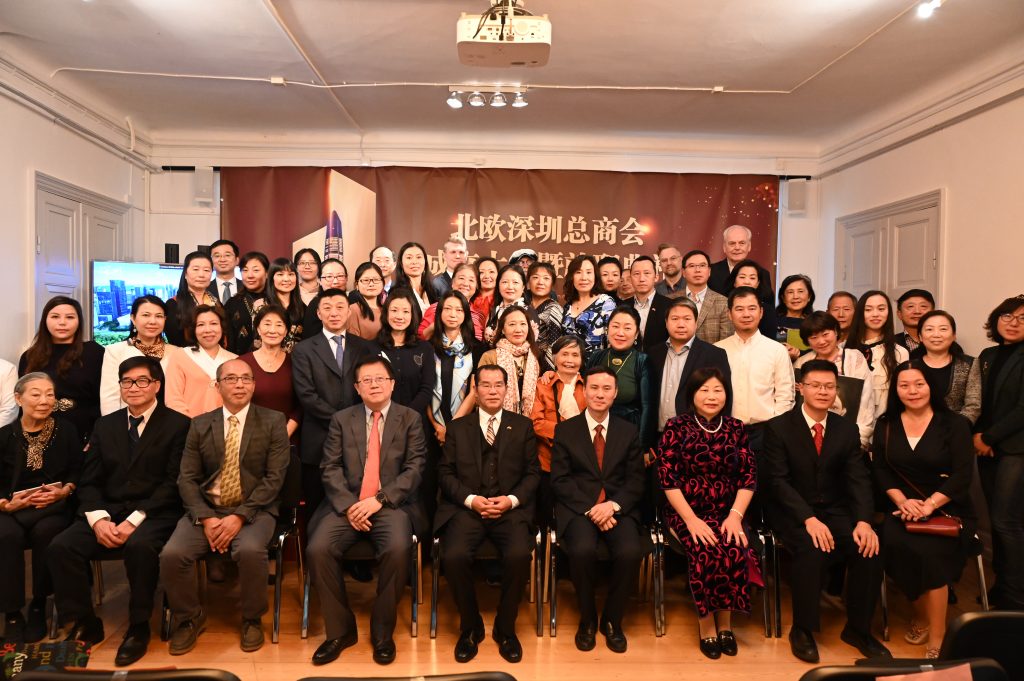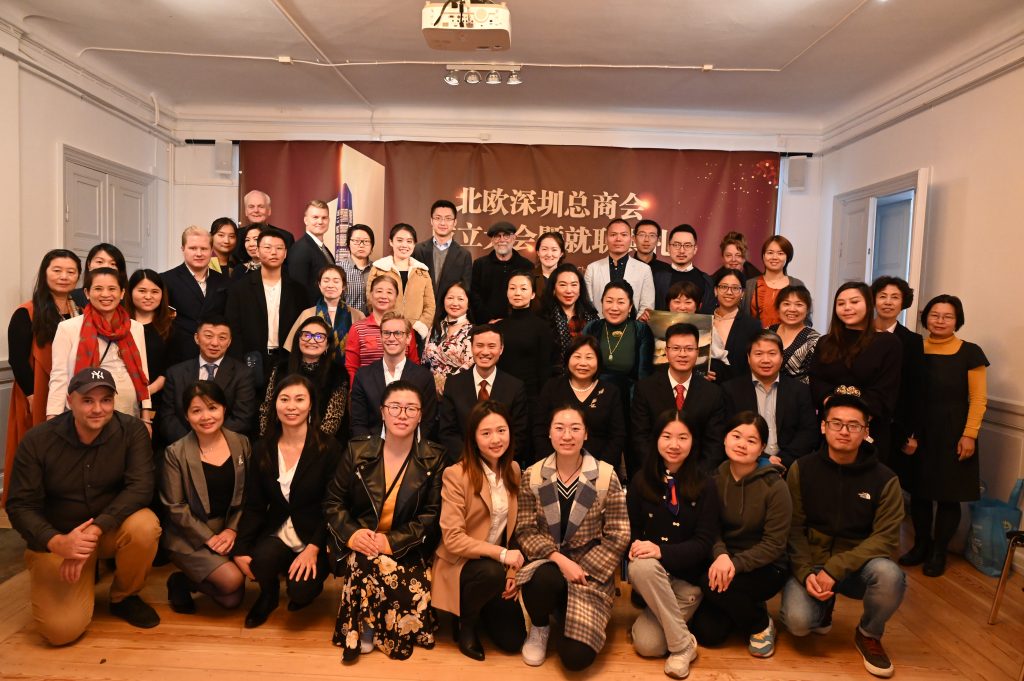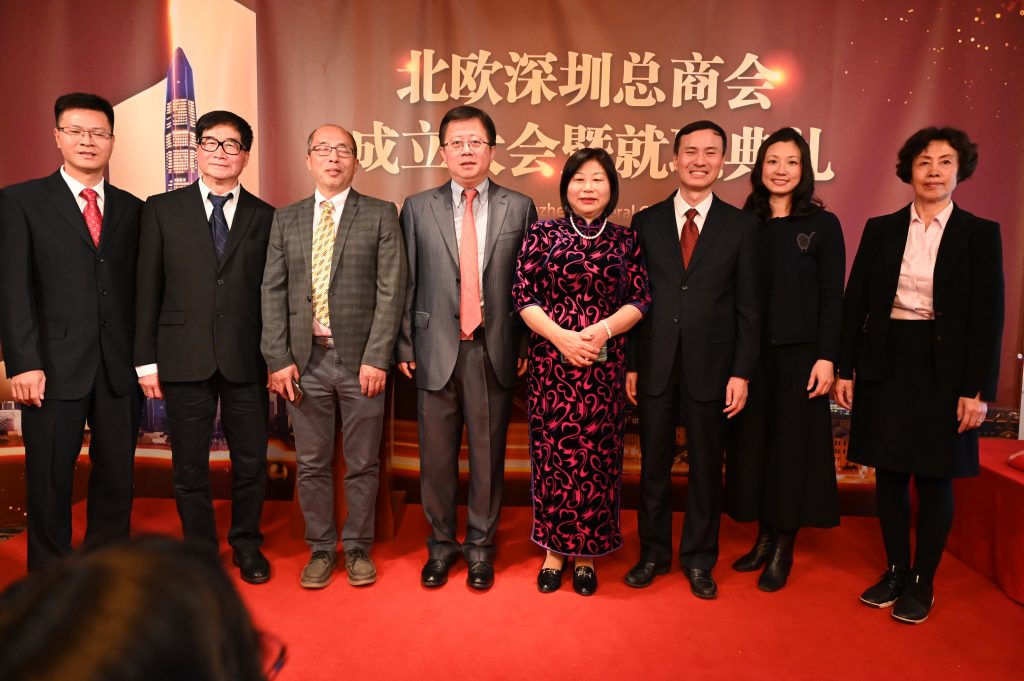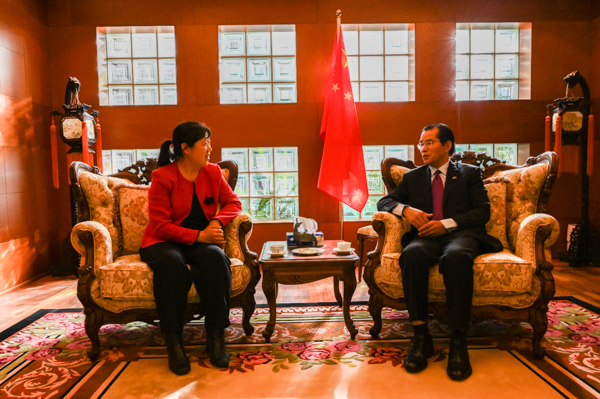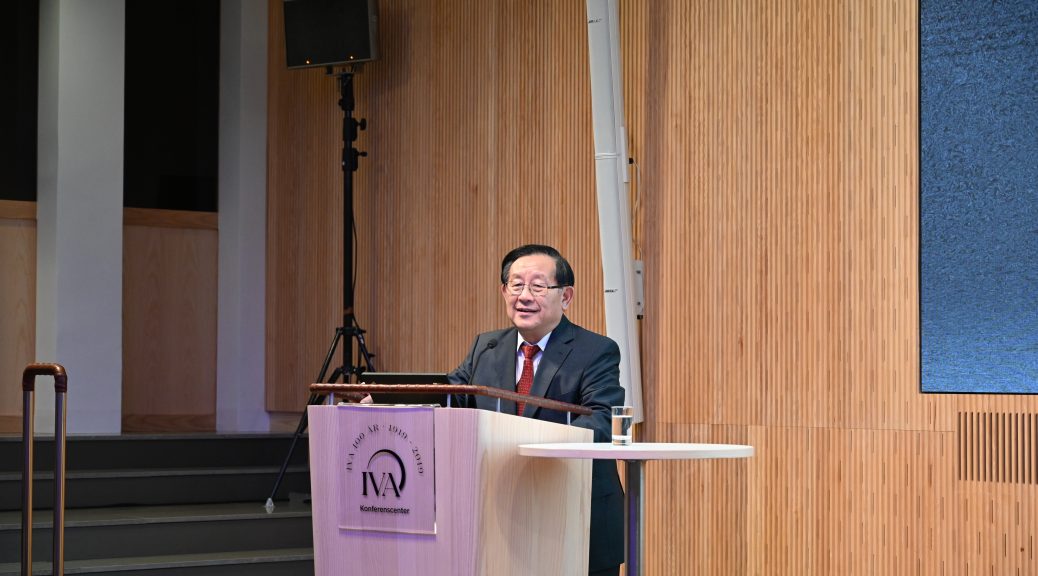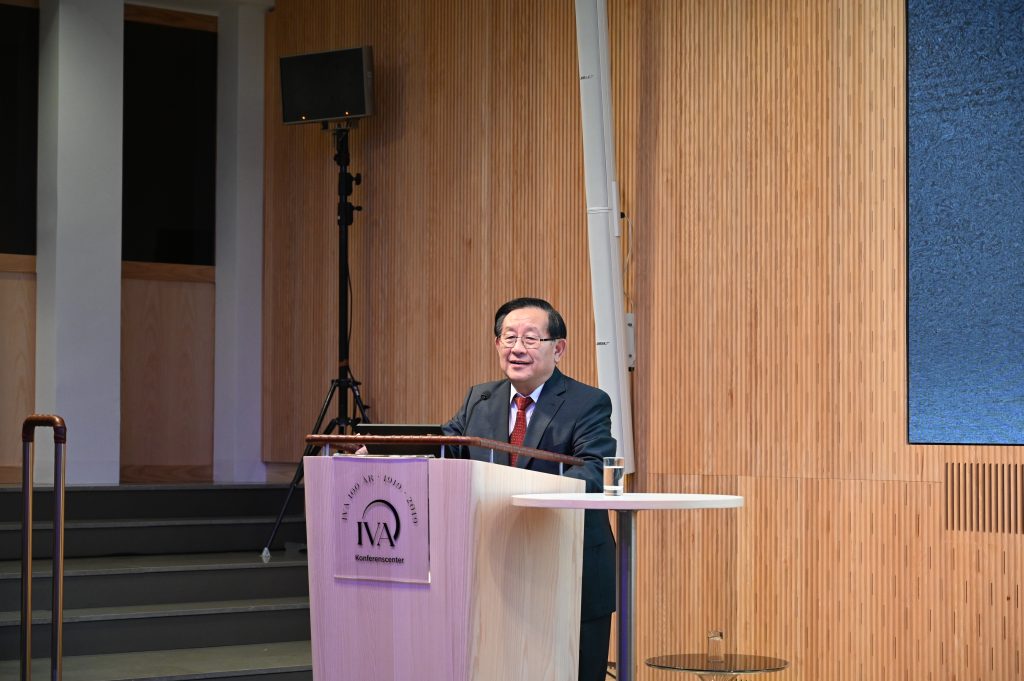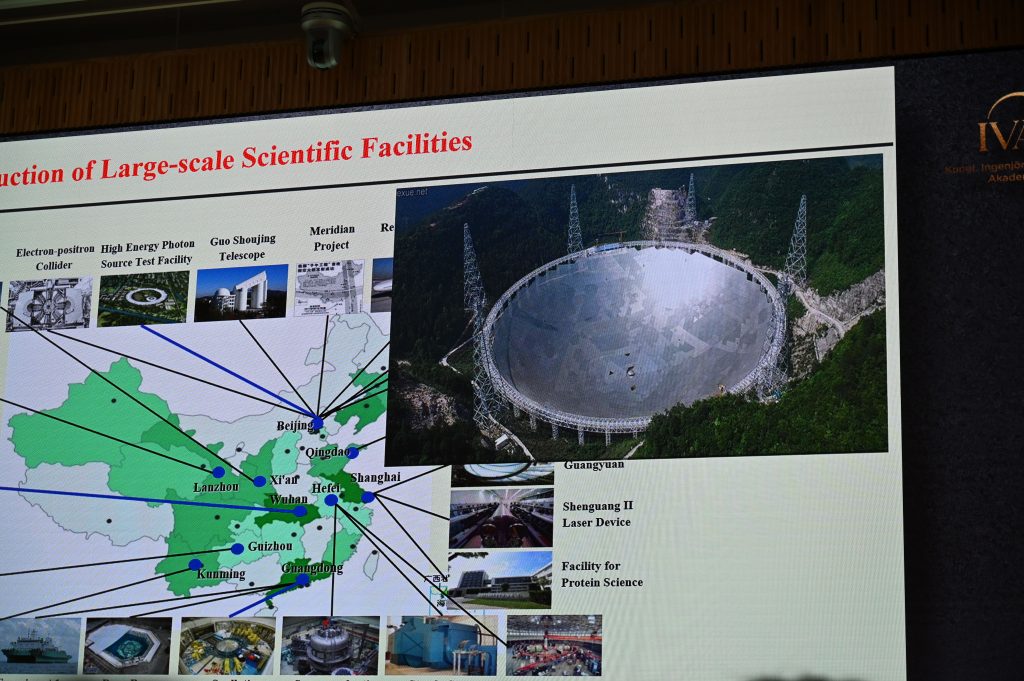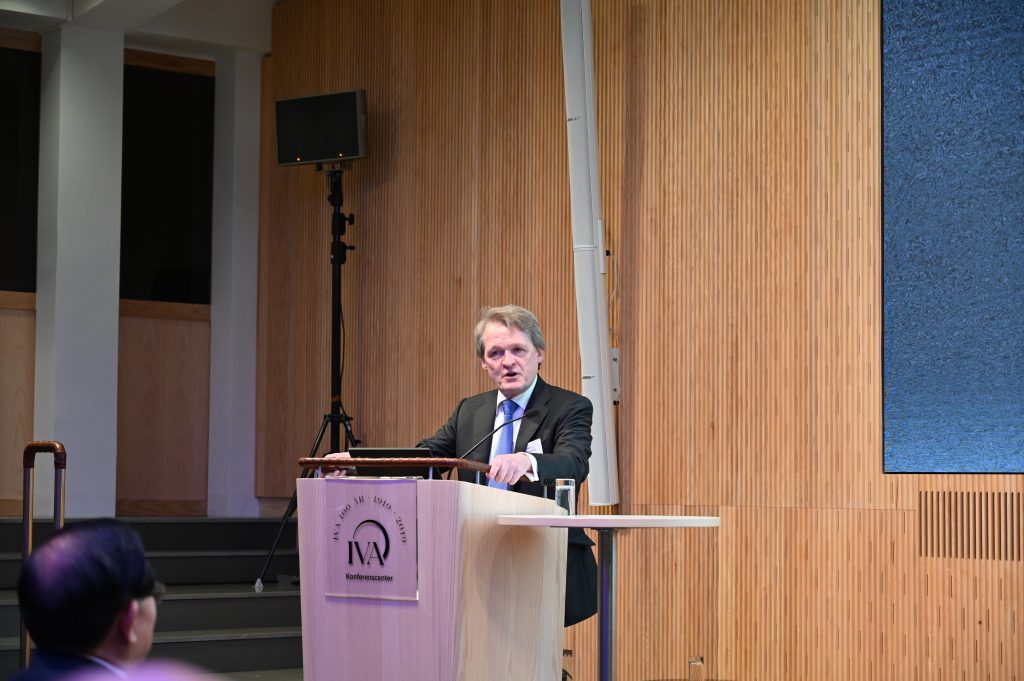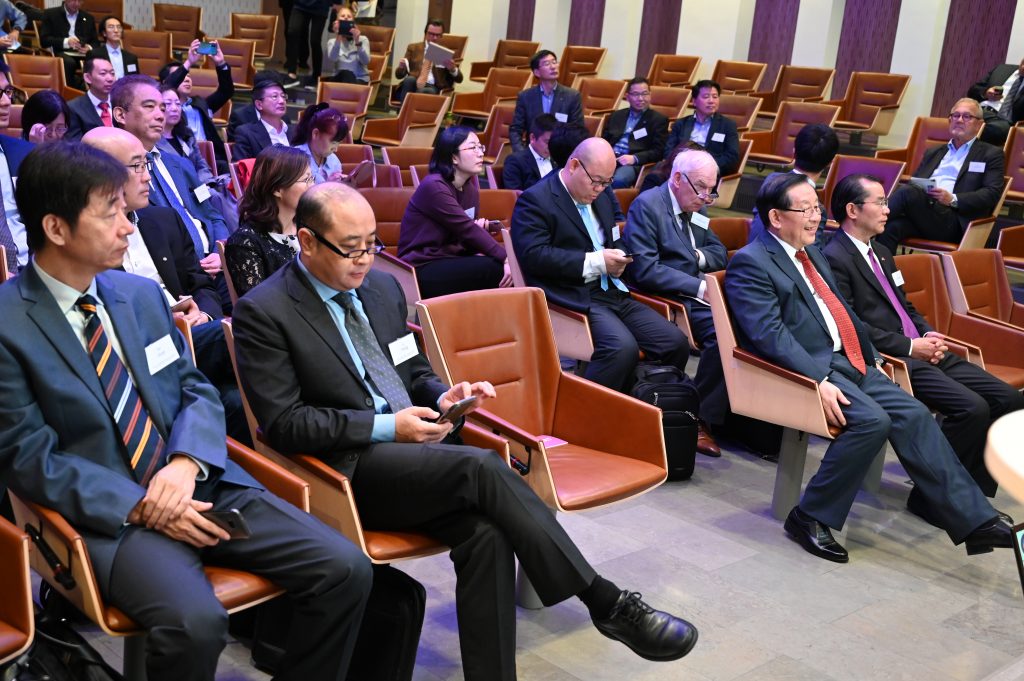Stockholm, Okt.10(Greenpost) — Reformer, öppnande och tolerans främjar en framgångsrik utveckling i Kina är en signerad artikel av Ambassadör Gui Congyou för svenska medier. Hela texter är som nedande:
Den 1 oktober 1949 grundades Folkrepubliken Kina. Detta avslutade Kinas nedsatte årshundrad som präglades av invaderingar och plundringar av västmakterna. Förtrycket av ”de tre bergen”- imperialism, feodalism och byråkratisk kapitalism störtades och det kinesiska folket har sedan stått upp och blivit herrar i sitt eget land, medan landets utveckling rusat intill en helt ny era.
Under de 71 åren sedan Nya Kina grundades, och särskilt under de senaste 40 åren av reformer och öppningar mot omvärlden, har Kina uppnått en framåtklivande snabb utveckling.
Dagens Kina har det bästa mänskliga rättigheter i sin historia. Under mer än 5000 år har det varit drömmar från generationer av kineser att skapa ett välmående samhälle utan bekymmer om mat och kläder och att grunda ett samhälle av ”stor harmoni” där allas rättigheter och värdighet respekteras och skyddas fullt ut. Nya Kina förvandlade denna dröm till verklighet. Om 3 månader är det tiden vi bygger färdigt det ”välmående samhälle” där absolut fattigdom utrotas i Kina där en femtedel av världens befolkning inte längre oroas över svält eller köld. Vi har redan rest upp världens största och mest omfattande socialförsäkrings-, sjukförsäkrings- och obligatoriska utbildningssystem. Folkets rättigheter att delta i statlig och social styrning är fullt garanterade. Nya Kina har lagstadgat jämställdhet mellan kvinnor och män i konstitutionen, och arbetat målmedvetet med jämställdhet, och aktivt stärkt kvinnors rättigheter. För närvarande är andelen kvinnliga sysselsatta i hela samhället 43,7%. Vi följer jämlikheten mellan alla etniska grupper och genomför politik för etnisk regional autonomi. Etniska minoriteters rättigheter att få utbildning, använda och utveckla sitt talade och skrivna språk samt upprätthålla sina egna kulturella traditioner och religiösa övertygelser respekteras och garanteras. 53 av de 55 etniska minoriteterna talar egna språk. I Xizang (eller Tibet som svenskar brukade skriva) finns det mer än 1700 platser för tibetansk buddhismaktivitet, med mer än 46 000 munkar och nunnor som bor i tempel och kloster. I Xinjiang finns det mer än 24 000 moskéer, och i genomsnitt äger 530 muslimer en moské, vilket är utstående även bland muslimska länder.
Att skapa en ekologisk civilisation har blivit en grundläggande nationell politik för Kinas utveckling. Idag har andelen kol av Kinas totala energiförbrukning minskat från cirka 70% till 59%, och andelen lågutsläpp uppgraderade termisk krafter har nått mer än 80%. Under de senaste 20 åren utgörs ca 25% av hela världens nya växtlighetstäckta yta av Kina, som är största på Jorden. Kina utvecklar kraftigt gröna transporter. Produktions- och försäljningsvolymen för el- och hybrid-bilar har rankats som först i världen i många år, med en kumulativ summa av 1,8 miljoner fordon, och står för mer än 50% av världens bilar av denna typ. Ett snabbtågjärnvägsnät som täcker hela landet är en grundbult. Delade cyklar är populära över hela landet. Som det största utvecklingslandet har Kina implementerat en nationell strategi för att aktivt reagera på världens klimatförändringar, slutfört klimatåtgärdens mål 2020 före schemat och gjort stora bidrag till det globala svaret på klimatfrågor.
När det gäller kampen mot Covid-19 är Kina en aktiv deltagare och en viktig bidragsgivare till det globala samarbetet. Inför det plötsliga utbrottet av Covid-19 i början av detta år insisterade det kinesiska partiet och regeringen på att folks liv är högsta prioritet och startade snabbt ett totalt folkkrig för förebyggande och kontroll av epidemien. Landets 1.4 miljarder människor har jobbat stenhårt tillsammans för att inledningsvis begränsa epidemins spridning på ungefär en månad, pressa de inhemska dagliga nya fallen ner till under 10 per dag inom två månader och få avgörande vinst i Wuhan och Hubei provins på tre månader, därpå kunde man få det strategiskt viktiga resultat i den nationella kampen.
Samtidigt fullgör Kina aktivt sina internationella ansvar. Vi rapporterar proaktivt epidemi-informationen till Världshälsoorganisationen och relevanta länder och regionala organisationer släpper den nya koronavirusgensekvens och släpper diagnos och behandlingsplan samt plan för förebyggande och kontroll allt vid det tidigaste möjliga tillfället, bara för att dela värdefulla information om förebyggande, kontroll och behandlingserfarenhet med omvärlden. Kina förespråkar aktivt upprättandet av ett globalt samhälle för människors hälsa, skickade expertgrupper till 32 länder, tillhandahöll 283 gånger hjälpmaterial till 150 länder och fyra internationella organisationer och intensifierade exporten av stora mängder anti-epidemiskt material.
Som världens största leverantör av anti-epidemiförbrukning hade Kina i början av september exporterat 151,5 miljarder masker, 1,4 miljarder skyddskläder, 230 miljoner skyddsglasögon och 470 miljoner testpaket. Kina kommer också att fortsätta att främja en rad internationella samarbetsåtgärder för förebyggande och kontroll av epidemier, inklusive att göra vacciner till en global offentlig produkt efter det att de nya Corona-vaccinen är färdiga att tas i bruk.
Kina har alltid varit en bidragsgivare till världsutvecklingen, en byggare av världsfred och en försvarare av internationell ordning. Kina har blivit den största handelspartnern till mer än 130 länder och regioner i världen och den viktigaste marknaden för stora multinationella företag. Kinas totala tullnivå har sjunkit under 7,5%, vilket är nära den europeiska nivån, och planeras att fortsätta sänkas i framtiden. Tillgången till den kinesiska marknaden expanderar också och den har blivit en av de ekonomier som har haft den största förbättringen av affärsmiljön under de senaste två åren. Samtidigt har Kina alltid bedrivit en defensiv försvarspolitik, som åtagit sig att skydda sin egen suveränitet, självständighet och territoriella integritet, och kommer aldrig att skada utan stödja andra länders ansträngningar för att skydda suveränitet, självständighet och territoriell integritet och motsätter sig resolut aggression och krig. Kina vill skydda det internationella systemet med FN som kärnan och den internationella ordningen baserad på folkrätt.
I början kopierades Nya Kina Sovjetunionens centraliserade statliga styrningssystem i sin helhet, särskilt det planerade ekonomiska systemet, vilket allvarligt hindrade Kinasutveckling av produktivitet och folks strävan efter ett bättre liv, som följd fastnade landets utveckling på länge. År 1978 började Kina grundligt reformera detta styva ledningssystem. Man utvecklade kraftigt demokrati i statlig förvaltning och införde marknadskonkurrens inom ekonomisk utveckling, vilket kraftigt stimulerade folks initiativ, entusiasm och kreativitet för att bygga landet och skapa ett bättre liv. Motorn för social och ekonomisk utveckling aktiverades. Kina kommer att fortsätta att reformera produktionsförhållanden och låta marknaden spela en avgörande roll i fördelningen av resurser.
Medan Kina fortsätter att fördjupa interna reformer, främjar Kina kraftigt öppnandet för omvärlden och introducerar avancerade utländska förvaltningskoncept, erfarenhet, kapital och teknik för att hjälpa den inhemska utvecklingen.
När Kina var självbelåten, stängde landet mot omvärlden, och vägrade at acceptera avancerade utvecklingskoncept, erfarenheter och prestationer, kom Kina på efterkälken. Öppenhet eller slutenhet avgör Kinas framtid och öde. Även om Kina har blivit världens näst största ekonomi, kommer takten i öppnandet mot omvärlden inte att minska. Kina ska öppnas mer och mer. För närvarande har utländska försäkringsbolag och avancerade biltillverkare möjlighet att etablera helägda företag i Kina eller kontrollera mer aktie andel även aktiemajoritet i kinesisk-utländska joint venture.
En annan viktig aspekt av Kinas framgångsrika utveckling är Tolerans. Det finns mer än 190 länder och tusentals etniska grupper i världen, med olika civilisationer. Varje land, nation och civilisation har sina egna egenskaper och fördelar. Tolerans, ömsesidigt utbyte och lärande från varandra gäller inte bara för varje land, utan också för harmoni i världen och att undvika hat, konflikt och krig. Filosofisk sett finns det inte två identiska löv i världen. Kineser säger att havet tar emot varje ström för att vara stort. Om du inte kan tolerera andra, kan du inte få det du förtjänar för att överleva och utvecklas. Kinas system har utvecklats ur sin egen historia, egenskaper och nationella förhållanden och stöds av det kinesiska folket. Men det är inte nödvändigtvis lämpligt för andra länder. Vi strävar inte efter att införa vårt system i andra länder och vi accepterar inte att andra länder tvinga sina egna system på Kina. Kina försöker inte använda sitt eget system för att transformera andra länder och vägrar andra länder att använda sin makt att omvandla Kina. Vi står för ömsesidig respekt, likabehandling och icke-inblandning i varandras interna angelägenheter med alla länder i världen. Samtidigt betonar vi dialog, kommunikation, utbyte, ömsesidigt lärande, gemensam utveckling och gemensamma framsteg.
(Xuefei Chen Axelsson)
改革、开放、包容促进中国成功发展
(桂从友大使发瑞典媒体署名文章)
1949年10月1日,中华人民共和国成立,结束了近代100余年来受西方列强侵占、掠夺的屈辱史,推翻帝国主义、封建主义、官僚资本主义三座大山的压迫,中国人民从此站起来了,成了自己国家的主人,中国的发展翻开了全新的一页。
新中国成立71年来,特别是改革开放40多年来,中国实现了跨越式发展。
当今中国的人权状况处于历史最好时期。在中国5000多年的历史进程中,实现衣食无忧的小康,创建人的各项权利和尊严得到充分尊重和保护的“大同”社会一直是一代代中国人孜孜以求的梦想。新中国将这一梦想变为现实。再过3个月,我们将全面建成小康社会,彻底消灭绝对贫困,让占全球五分之一的人口不愁吃、不愁穿。我们建成了世界规模最大、覆盖人数最多的社会保障、医保和义务教育体系。人民参加国家和社会治理的各项权利得到充分保障。新中国将男女平等写入宪法,大力推进性别平等工作,积极促进妇女权益。目前全国女性就业人员占全社会就业人员的比重为43.7%。我们坚持各民族一律平等,实行民族区域自治政策,少数民族接受教育、使用发展本民族语言文字以及保持自身文化传统、宗教信仰等各项权利得到切实尊重和保障。55个少数民族中53个都有本民族语言。中国西藏有藏传佛教活动场所1700多处,住寺僧尼4.6万多人。新疆的清真寺有2.4万多所,平均每530名穆斯林民众就拥有一座清真寺,这一比例超过许多穆斯林国家。
生态文明建设成为中国发展的一项基本国策。在当今中国的能源消费中,煤炭的占比从以前的70%左右降到59%,火电超低排放改造比例达到80%以上。近20年来中国新增植被覆盖面积约占全球新增总量的25%,居全球首位。中国大力发展绿色交通,新能源汽车产销量连续多年世界第一,累计保有量达180万辆,占全球50%以上。覆盖全国的高铁网基本形成,共享单车等绿色出行方式风靡全国。作为最大的发展中国家,中国实施积极应对气候变化国家战略,提前完成2020年气候行动目标,为全球应对气候变化作出重大贡献。
中国是全球合作抗疫的积极参与者和重要贡献者。面对今年初突如其来的新冠肺炎疫情,中国党和政府坚持人民至上、生命至上,迅速打响疫情防控的人民战争、总体战、阻击战。14亿人民克服困难,付出巨大努力,用1个多月的时间初步遏制疫情蔓延势头,用2个月时间将本土每日新增病例控制在个位数以内,用3个月时间取得武汉和湖北保卫战的决定性成果,进而取得全国抗疫斗争重大战略成果。与此同时,中国积极履行国际责任,第一时间向世界卫生组织、有关国家和地区组织主动通报疫情信息,第一时间发布新冠病毒基因序列信息,第一时间公布诊疗方案和防控方案,毫无保留地分享防控和救治经验。中国积极倡导构建人类卫生健康共同体,向32个国家派出专家组,向150个国家和4个国际组织提供283批抗疫援助,并加紧出口大量抗疫物资。作为全球抗疫物资最大供应国,至9月初,中国已对外出口口罩1515亿只、防护服14亿件、护目镜2.3亿个、检测试剂盒4.7亿人份。中国还将继续推进疫情防控国际合作一系列举措,包括在新冠疫苗研发完成并投入使用后将疫苗作为全球公共产品。
中国始终是世界发展的贡献者、世界和平的建设者、国际秩序的捍卫者。中国已成为全球130多个国家和地区的最大贸易伙伴,是各大跨国企业最重要的市场。中国总体关税水平已降至7.5%以下,已接近欧洲水平,而且未来还将继续下降。中国市场准入也在不断扩大,已连续两年成为营商环境改善幅度最大的经济体之一。与此同时,中国始终奉行防御性的国防政策,致力于维护自身主权、独立和领土完整,决不损害、而是坚定支持世界各国维护主权、独立、领土完整的努力,坚决反对侵略和战争,坚定维护以联合国为核心的国际体系和以国际法为基础的国际秩序。
新中国成立初期,全盘照搬苏联高度集中的国家管理体制尤其是计划经济体制,严重阻碍社会生产力的发展和人民对美好生活的追求,导致国家发展长期贫穷落后。1978年,中国开始深刻改革这种僵化的管理体制,在国家管理中大力发展民主,在经济发展中引入市场竞争,极大地激发了人民建设国家和创造美好生活的主动性、积极性和创造性,激活了社会经济发展的引擎。中国将始终致力于改革一切不适应生产力发展的生产关系,使市场在资源配置中发挥决定性作用,将改革进行到底。
中国在不断深化内部改革的同时,大力推进对外开放,引进国外先进的管理理念、经验及资金、技术,助力国内发展。近代中国故步自封、闭关锁国,拒绝接纳外部先进发展理念、经验和文明发展成果,导致落后挨打。开放与封闭,决定着中国的前途和命运。尽管中国已成为世界第二大经济体,但开放的脚步不会停,而且开放的大门会越开越大。现在,已有国外保险公司、先进汽车制造企业等在中国建独资企业,或更多参股乃至可以控股中外合资企业。
包容是中国成功发展的另一条重要经验。世界上有190多个国家,上千个民族,有着各种文明,每个国家、民族、文明都有自己的特点和优势,彼此包容、相互交流、互学互鉴既是每个国家、民族和文明生存、发展之道,也是世界避免仇视、冲突和战争的和谐之道。从哲学上讲,世界上没有两片完全相同的树叶。中国人讲,海纳百川,有容乃大。不能包容别人,自己也得不到应有的生存和发展之道。中国的制度适合自己的历史、特点和国情,为中国人民所拥护,但不一定适合他国。我们不谋求将自己的制度强加于他国,也不接受他国将自己的制度强加给中国。中国不谋求用自己的制度改造他国,也拒绝他国用自己的制度改造中国。我们主张同世界各国相互尊重、平等相待、互不干涉内政,同时加强对话、沟通、交流,互学互鉴,共同发展,共同进步。
